Demystifying Adaptive Cruise Control: A Comprehensive Guide
As an auto tech expert and self-driving car enthusiast, I often get asked about Adaptive Cruise Control (ACC) and how exactly it works to automatically adjust your car‘s speed. ACC is one of the coolest semi-autonomous technologies available today, making highway drives safer and less stressful. But it‘s also complex under the hood!
In this comprehensive guide, I‘ll give you an in-depth look at ACC – how it works, different types, key benefits, limitations, and what the future holds for adaptive cruise and autonomous driving.

ACC 101 – Adjusting Speed to the Car in Front
ACC uses radar, laser sensors or cameras to monitor the vehicle ahead and adjust your speed accordingly to maintain a preset following distance. If the vehicle in front slows, so does your car – automatically! ACC reduces the constant manual braking and acceleration required in heavy traffic.
Here‘s a quick ACC capability comparison:
ACC delivers a major safety and convenience upgrade from old cruise control technology first introduced in the 1950s. Let‘s look under the hood at how ACC performs this speed adaptation trickery…
ACC Sensor Technology – Radar vs. Laser vs. Camera
ACC systems rely on forward-facing sensors to detect the speed and distance of vehicles ahead. Most ACC systems use radar (radio waves), while some premium vehicles use laser sensors or cameras paired with image processing. Here‘s how each sensor approach works:
Radar Adaptive Cruise Control
- Uses radio waves in the 24 GHz or 77 GHz frequency bands
- Excellent range (160m+) and unaffected by weather
- Distributed beam provides wide field of view
- Cannot identify shape and classification of objects
- Overall the most robust and widely adopted ACC technology
Laser Adaptive Cruise Control
- LIDAR (Light Detection and Ranging) laser sensors
- Very high resolution and accuracy
- Narrow, focused beam with longer range than radar
- Performance impacted by weather and dirt
- Limited adoption due to higher cost
Camera-Based Adaptive Cruise Control
- Uses front-facing camera and video processing
- Can visually identify vehicles braking ahead
- Shorter effective range with narrow field of view
- Limited use for ACC, better for lane centering
Radar ACC is the most common since it combines long range, wide scanning angle, with reasonable cost. However, some automakers like Toyota and BMW use both radar and cameras to complement each other.
Real World ACC Performance
In optimal highway conditions, ACC works exceptionally well to adapt your vehicle‘s speed based on traffic ahead. However, ACC has limitations that require driver supervision:
Following distance – Most systems allow setting 1,2 or 3 second gap to car ahead. Younger drivers tend to prefer the risky 1 second gap!
Cut-ins – When a vehicle changes lane in front, ACC response can be delayed
Curves & hills – Around blind turns or over hills, performance drops as radar line-of-sight is lost
Bad weather – Heavy rain, snow, and fog degrade radar and laser sensor effectiveness
Bright light – Low sun angles and bright reflections can overwhelm camera sensors
Small objects – Most ACC systems have trouble consistently detecting motorcycles, bicycles, pedestrians
While ACC has its limits, it‘s remarkably helpful day-to-day in reducing driver burden. But expect some occasionally quirky behavior so you‘re not caught off guard!
ACC Availability Across Vehicle Makes
ACC technology premiered in 1992, but only became popular on luxury cars in the early 2000s. ACC is now commonplace across all major auto brands:
And it‘s a standard feature on most luxury vehicles:
With so many automakers offering ACC, it‘s now an expected convenience feature for car buyers.
Comparing OEM Adaptive Cruise Systems
While ACC capabilities are similar across brands, there are some notable differences between automaker systems:
Mercedes-Benz Distronic
- Industry-leading ACC technology since introduced in 1998
- Uses long-range 77 GHz radar + stereo cameras
- Capable of full stop-and-go operation
- Automatically adjusts speed for curves and junctions
GM Super Cruise
- Camera + radar ACC combined with precision GPS mapping
- Enables hands-free driving on limited access highways
- Driver attention monitoring via face tracking camera
Nissan ProPilot Assist
- Budget ACC + lane centering system
- Smooth performance but more limited capability
- Delayed responses compared to premium systems
Toyota Dynamic Radar Cruise
- Lower speed operation down to 25mph
- Conservative speed adjustment when following
- Prone to leaving large gaps in traffic
Overall Mercedes sets the benchmark for ACC performance and capability in my opinion, with German automakers continuing to lead the way.
Adding ACC to Older Vehicles
You don‘t need to buy a new car to experience ACC convenience. There are aftermarket ACC systems available to add radar-based speed adaptation to older vehicles:
Comma Two : $1100 standalone ACC system powered by camera and radar sensors. Installs by connecting directly to vehicle CAN bus. Impressive capabilities given aftermarket nature.
Autocruise : $2500 ACC system requiring professional installation. Uses front camera and radar sensors. Provides ACC + lane centering.
RoadMate : $1800 radar-only ACC system. Easier self-install with OBDII plug-in. But limited braking capability.
Aftermarket systems provide a taste of ACC and advanced driver assist capabilities. But overall, OEM automaker ACC integration delivers a smoother and more reliable driver experience.
The Road to Fully Autonomous Driving
A key benefit of ACC systems is paving the way for fully autonomous self-driving vehicle (SDV) technology. The cruise control computers, radars, and cameras ACC relies on provide the foundational sensing and actuation building blocks for SDVs.
Here are some of the key ACC enhancements feeding into full autonomy:
Improved camera imaging – Higher resolution, HDR, night vision, wider field of view
Sensor fusion – Combining radar, camera and ultrasounds for 360 degree coverage
Tighter vehicle integration – Braking and steering authority expanded beyond ACC
Detailed 3D mapping – Ultra-precise maps enable self-driving without relying solely on sensors
V2X communication – Sharing intent and sensor data with nearby vehicles, infrastructure
Redundant systems – Backup sensors, computers, and actuators to maximize safety
The big challenge is mastering full self-driving in complex urban environments. While ACC handles long boring highway drives, crowded city streets require an entirely new level of autonomous driving expertise.
Optimizing ACC for the Future
As an auto tech expert, I see great potential ahead for ACC technology. But there are also improvements I‘d love to see:
Quicker reactions – Faster stopping when vehicle cuts in front
All speed operation – ACC availability even in start-stop traffic
Improved object detection – Identifying pedestrians, cyclists, animals
Left/right radar – Side-facing sensors to monitor blind spots
Personalization – Driver tailored ACC preferences and profiles
Intuitive controls – Simplifying overly complex ACC settings menus
Seamless transitions – Handoff between ACC, lane centering and parking systems
Driver monitoring – Alerts for distraction and loss of attention
With future refinement, ACC can move beyond just being a convenience feature and provide truly safe semi-autonomous driving.
Challenges Facing Consumer ACC Adoption
Despite the benefits of ACC, there are still barriers to mass consumer adoption:
Cost – Only available on higher trim models outside budget for many car buyers
Trust – Drivers underestimate capabilities and effectiveness of ACC
Complexity – Many settings overwhelm drivers new to the technology
Reliability – Sensor degradation and performance concerns over vehicle lifetime
Education – Lack of ACC training for consumers
Addressing these challenges will be key for ACC to transition from a luxury feature to a standard capability that drivers actually use day-to-day.
Testing and Validating Adaptive Cruise Systems
Before ACC systems hit the road, automakers put them through rigorous testing to ensure safety:
Hardware-in-the-Loop – Validating ACC sensor + ECU integration
Test track assessment – Repeated runs observing ACC capability in action
Scenario testing – Emulating cut-ins, curved roads, weather effects
Naturalistic driving – Recording ACC use in real uncontrolled driving
Simulation – Modeling ACC components and logic virtually
Public road testing – Validation in early prototype vehicles
Safety audits – Third-party review of ACC functionality
Months of testing provides confidence in ACC operation. But it‘s impossible to evaluate every edge case scenario an ACC system may encounter once on the road.
Insider ACC Troubleshooting Tips
To dig deeper into ACC, I connected with Sam who works on ACC radar sensor calibration at General Motors. He shared some pro tips on troubleshooting ACC issues:
"One problem we see is radar misalignment that prevents ACC from detecting vehicles ahead accurately. This can occur if the radar or front bumper gets even slightly shifted, say due to a minor collision. I recommend first visually inspecting the radar position and realigning if necessary. Also watch out for mud or snow buildup around the sensor which can block radio waves."
"Software bugs are another ACC gremlin, like incorrect gap distance or delayed braking. But these can often be remedied with an ECU update at the dealership. And make sure the windshield in front of the camera is squeaky clean for camera-based systems! Dirty glass is an easy pitfall."
So when ACC acts up, check for sensor obstructions, misalignment, and also ask your dealer to verify the latest software is installed.
I hope this ACC deep dive has helped shed light on how this clever technology works and what the future holds. Let me know if you have any other ACC questions!
How useful was this post?
Click on a star to rate it!
Average rating 2.5 / 5. Vote count: 2
No votes so far! Be the first to rate this post.
Share this:
You may like to read,.
- Why is $2 Good Luck? Digging into the Quirky History and Lore of the $2 Bill
- How Do I Switch to NA Servers? The Ultimate Guide for Ping Lovers
- What Does it Mean When a Symbiote is Red?
- Hey friend, let‘s settle this – are Rabbids good or evil?
- Why is stealing a car called Grand Theft Auto?
- Using USB SuperSpeed for Monitor Connectivity – An In-Depth Guide
- Is 4GB RAM 64GB Good Enough in 2024?
- What is an Omega Slick? The Complete Expert Guide

Ad-free. Influence-free. Powered by consumers.
The payment for your account couldn't be processed or you've canceled your account with us.
We don’t recognize that sign in. Your username maybe be your email address. Passwords are 6-20 characters with at least one number and letter.
We still don’t recognize that sign in. Retrieve your username. Reset your password.
Forgot your username or password ?
Don’t have an account?
- Account Settings
- My Benefits
- My Products
- Donate Donate
Save products you love, products you own and much more!
Other Membership Benefits:
Suggested Searches
- Become a Member
Car Ratings & Reviews
2024 Top Picks
Car Buying & Pricing
Which Car Brands Make the Best Vehicles?
Tires, Maintenance & Repair
Car Reliability Guide
Key Topics & News
Listen to the Talking Cars Podcast
Home & Garden
Bed & Bath
Top Picks From CR
Best Mattresses
Lawn & Garden
TOP PICKS FROM CR
Best Lawn Mowers and Tractors
Home Improvement
Home Improvement Essential
Best Wood Stains
Home Safety & Security
HOME SAFETY
Best DIY Home Security Systems
REPAIR OR REPLACE?
What to Do With a Broken Appliance
Small Appliances
Best Small Kitchen Appliances
Laundry & Cleaning
Best Washing Machines
Heating, Cooling & Air
Most Reliable Central Air-Conditioning Systems
Electronics
Home Entertainment
FIND YOUR NEW TV
Home Office
Cheapest Printers for Ink Costs
Smartphones & Wearables
BEST SMARTPHONES
Find the Right Phone for You
Digital Security & Privacy
MEMBER BENEFIT
CR Security Planner
Take Action
Guide to Adaptive Cruise Control
How this convenience feature works to reduce your stress on long drives
Adaptive cruise control (ACC) is like traditional cruise control, but smarter. ACC systems allow you to set a desired speed until your vehicle encounters slower-moving traffic. Then it will brake to maintain a set distance from the car ahead. Once the traffic starts moving again or if there is no longer a car in the lane ahead, ACC will accelerate to resume the previous set speed. Although ACC systems may take some getting used to, our survey respondents told us they appreciated the stress relief the feature brings.
“I use the feature mostly on the freeway and in stop-and-go traffic. I find it reduces tension and fatigue,” wrote a 2020 Subaru Outback owner. A 2018 Audi Q5 driver agreed. “It is so nice to just set it and let the car worry about the traffic,” they told CR.
The systems use lasers, radar, cameras, or a combination of those. If traffic slows to a stop, most ACC systems will bring the car to a complete stop, then bring it back up to speed when traffic gets going again. Others work only within certain speeds and/or might not start to accelerate automatically.
Adaptive cruise control (ACC): Cruise control that also assists with acceleration and/or braking to maintain a driver-selected gap to the vehicle in front. Some systems can come to a stop and continue while others cannot. If the car comes to a full stop, you may have to press the accelerator or a button on the steering wheel to start moving again.
Not all systems work at low speeds, so drivers who plan to use ACC in slow traffic should check the limitations of any system they plan to buy. These particular systems will often have the words “traffic jam” or “stop and go” in their name.
These features are usually activated using a button on the steering wheel with the image of a car next to a speedometer with an arrow pointing at it. A conventional cruise control system does not automatically keep a set distance away from the car in front, and it is indicated by a similar logo without the car next to the speedometer. A tip to know if your car has adaptive cruise control or regular cruise control is to look for the “gap distance” button, which usually shows a symbol of a car with horizontal distance bars in front. This button will determine how much space your car leaves between its front bumper and the rear of the car it is following.
In our most recent survey, we asked CR members to rate their experiences with the advanced safety and driver assistance systems on their model-year 2017 to 2022 cars. Respondents answered questions about their satisfaction with the systems. The survey covered about 47,000 vehicles. Most respondents told us they were “very satisfied” with ACC. Satisfaction was higher for older drivers.
OVERALL SATISFACTION
What to Look For in an Adaptive Cruise Control System
Every ACC system works slightly differently, says Kelly Funkhouser, manager for vehicle technology at CR. Some do a better job than others at recognizing merging traffic and automatically apply the brakes, while others wait too long to slow your car, requiring the driver to take control—especially when a vehicle in front of you cuts you off with a close merge.
“Most ACC systems can only be set to speeds above 20 mph but will slow the vehicle to speeds below that in stop-and-go traffic,” she says. “There are a few systems out there that don’t bring the car all the way to a stop but instead just shut off at low speeds. That can be dangerous when you’re traveling behind another slowing vehicle.” She recommends reading the automaker’s website closely and learning about the speed ranges before using ACC while on your test drive.
ACC is meant for convenience, not as a replacement for an alert driver, Funkhouser says. So don’t use adaptive cruise control as an excuse to get distracted. “Just because the car is controlling your speed doesn’t mean that you can check out,” she says. “These systems do not do well at detecting or slowing for vehicles ahead if you approach them at a high rate of speed. The driver should always be monitoring the surrounding traffic and looking ahead for potential hazards.”
Keith Barry
Keith Barry has been an auto reporter at Consumer Reports since 2018. He focuses on safety, technology, and the environmental impact of cars. Previously, he led home and appliance coverage at Reviewed; reported on cars for USA Today, Wired, and Car & Driver; and wrote for other publications as well. Keith earned a master’s degree in public health from Tufts University. Follow him on Twitter @itskeithbarry .
Sharing is Nice
We respect your privacy . All email addresses you provide will be used just for sending this story.
Trending in Car Safety
Best Labor Day Deals on New Cars for 2024
Popular Cars to Avoid and What to Buy Instead
Best Cars of the Year: 10 Top Picks of 2024
Best Used Cars and SUVs Under $20,000
- Tips & advice
Cruise control and adaptive cruise control: the complete guide
Cruise control is a great extra to have if you do regular motorway journeys, while adaptive cruise control arguably makes even more sense.

What is cruise control? Cruise control is an electronic system that automatically regulates a car's speed without the driver having to keep their foot on the accelerator. That's the simple answer, but today car manufacturers are adding ever-more advanced cruise control systems to their models, all designed to make driving easier and safer, while many of the newer technologies are on the first tentative steps towards autonomous vehicles .
Once upon a time, cruise control was the preserve of high-end luxury cars, but as the technology has become more affordable, car makers have rolled it out on more mainstream models. Today, you can get it on even the smallest city cars , while other models get a proprietary speed limited system that requires a bit more input from the driver.
• What is AEB?
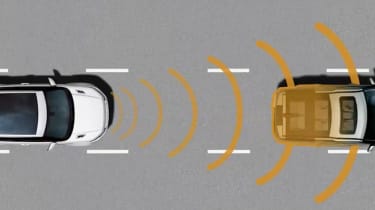
Elsewhere, the progress of technology means that car makers have been able to develop adaptive cruise control (ACC) systems that can vary a car's speed according to traffic, while the most advanced systems are on the steps towards fully autonomous driving.
Here we explain how cruise control works and break down the different kinds of system on offer, highlighting their advantages and limitations, so you can decide if it's an option that's worth ticking on your next new car purchase.
Cruise control history
Cruise control can trace its origins back to the 17th and 18th century, when engineers developed 'speed control' systems for steam engines. These mechanical systems were adapted by some early automobile makers at the start of the 20th century, although the predecessor to modern cruise control didn't appear until the 1950s.
The first car to feature cruise control was a 1958 Imperial, which was Chrysler's luxury division. Called 'Auto-pilot', the system was mechanical and was connected to the engine propshaft. It had a dial on the dashboard to preselect a speed and an electric motor that adjusted throttle position to maintain it.
US firm American Motors produced a budget version of cruise control for its automatic cars in 1965, but cruise control really took off in the US during the oil crisis of 1973. Manufacturers had developed electronic cruise control systems by this time, and these makers promoted the benefits of the system as it delivered constant throttle inputs, rather than the erratic flexing of the driver's right foot for improved fuel economy.
• What is horsepower?
Cruise control found popularity in the US first because of that nation's fondness of automatic gearboxes, long travelling distances and the relatively straight and wide highway network. In Europe, cruise control took a little longer to gain a foothold, but like the US, it first appeared on high-end luxury cars before filtering its way down to more mainstream models.
The first adaptive cruise control (ACC) system appeared in Japan in the early 1990s, although the first systems simply warned the driver of slower traffic ahead, and didn't control the car's throttle or brakes.
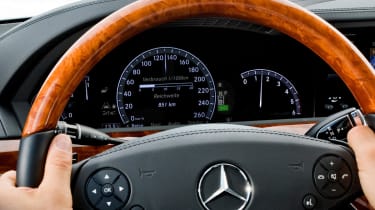
The first proper ACC system was Mercedes ' Distronic system, which appeared on the S-Class limousine in 1999. This system not only controlled the throttle, but also the brakes to maintain a set distance to the vehicle in front.
Since then, car makers have embraced ACC, and it can be found on superminis , hatchbacks and sports cars , while the rising level of traffic on our roads means it's arguably a more useful feature than standard cruise control on its own, as it can adjust speed according to traffic flow.
• What is 4x4? All-wheel-drive systems explained
How does cruise control work?
Modern cruise control systems are integrated into a car's electronics, and are often combined with additional tech, such as lane departure warning and blind spot sensors. With standard cruise control, you need to select cruise mode via a switch, then accelerate to your desired speed, and press a button – either on the steering wheel or on a lever on the steering column - to set that speed.
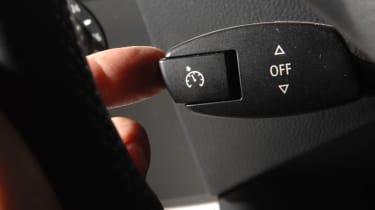
The car's electronics then maintain your selected speed, so you can take your foot of the accelerator. On some cars you can adjust your speed via a button, and the car will automatically change its speed accordingly.
On a car with adaptive cruise control (ACC), you switch on the system, then you can raise or lower your speed as desired, and the car will accelerate to that set speed. These systems use either radar or laser sensors to maintain a set distance to the car in front, and they also have the ability to increase or decrease that distance as required.
To deactivate cruise control, you simply press a button to regain control of the throttle. However, one important safety feature that all of these systems are required to have is that the system will immediately deactivate if the car's brakes are applied. On cars with a manual gearbox, pressing the clutch pedal will sometimes have the same effect, although not all cars behave in the same way. Most cars will have a memory function, so that you can resume the same speed after the brakes have been applied.
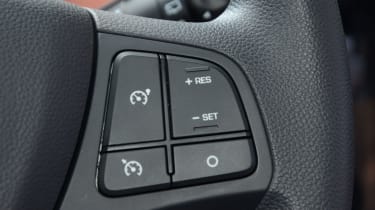
Earlier cruise control systems would have a lower speed threshold of around 20-30mph where cruise control couldn't be activated, and some manufacturers still maintain this set-up. However, some of the latest ACC systems also incorporate a traffic function, so they can operate in stop-start conditions.
Cruise control types
Essentially there are four types of cruise control on offer, ranging from the most basic speed limiter to systems that can negotiate stop-start traffic and even change lanes. We look at the benefits and disadvantages of each below.
Speed limiter
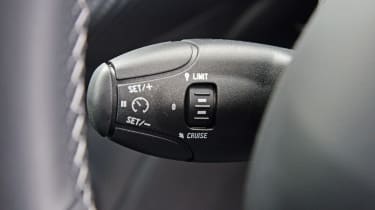
What is it? The most basic form of cruise control. There are systems that can be hard-wired into a vehicle to limit its top speed (a 70mph limit in vans, for example), or there are driver-activated systems. You can set a maximum speed for your vehicle, but you maintain control of the car's accelerator at all times. When you approach your set maximum, the car will simply stop accelerating. This will usually happen softly, so you'll barely notice.
Found on: Citroen, Ford, Nissan, Peugeot, Renault, vans, can be added aftermarket, too. Advantages: Helps you stick to speed limits, saves fuel. Disadvantages: Driver has to continue using the throttle to maintain speed.
Cruise control

What is it? Standard cruise control is a fairly common feature on new cars. You turn the system on (usually indicated by a graphic on the dashboard), then once you're up to your desired speed, you press a button to set it, and the car maintains that speed.
Found on: Most mainstream new cars, except for the most basic trims. Advantages: Takes strain out of long drives, more fuel efficient than using the accelerator manually, helps you stick to speed limits. Disadvantages: Driver has to take over when traffic slows, only worth using on clear motorways.
Adaptive cruise control
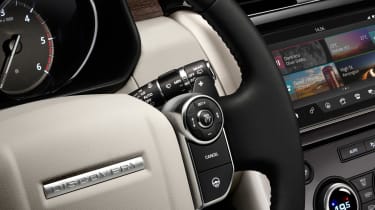
What is it? Either a radar or laser-based system that can maintain speed, but reduces speed if the gap to the car in front falls below a preset distance. This constitutes Level One automation on the automated vehicle classification chart, as they driver is required to take control at any time.
Found on: Assorted BMW, Fiat group, Ford, JLR, Lexus, Mercedes, VW Group models, and increasing in use by other makers. Advantages: Adjusts speed according to traffic, takes strain out of long drives, helps fuel efficiency. Disadvantages: Sensors can be 'blinded' in bad weather, electronics can be slow to react to sudden traffic slowing, distance to the car in front can be big enough to tempt other drivers to cut in front of you, sometime systems are jerky when changing speed.
Semi-autonomous cruise control
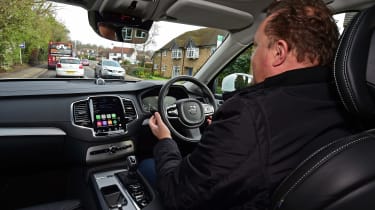
The latest hi-tech cruise control systems are one step closer to the fully autonomous self-driving car, and are classed as Level 2 automation. This means the automation can control the throttle, brakes and steering, but the driver still needs to intervene if the systems fail to detect objects. Semi-autonomous systems can vary in sophistication, and can help with steering inputs, move in stop-start traffic, or even change lanes on the motorway with the flick of an indicator, or adjust the car's speed according to GPS data and road sign recognition cameras.
Found on: Audi A3 /A8/Q7, BMW 7 Series , Mercedes S-Class , Volvo XC90 Advantages: Takes strain out of driving and traffic jams, helps fuel consumption. Disadvantages: Sensors need to be kept clear for it to work, too easy for driver to 'switch off' and lose concentration.
Do you have cruise control or adaptive cruise control on your car? Do you use it? Let us know what you think of the technology in the comments...
Dean has been part of the Auto Express team for more than 20 years, and has worked across nearly all departments, starting on magazine production, then moving to road tests and reviews. He's our resident van expert, but covers everything from scooters and motorbikes to supercars and consumer products.
Most Popular

Labour could introduce “regressive” pay-per-mile road tax in October’s Autumn Budget
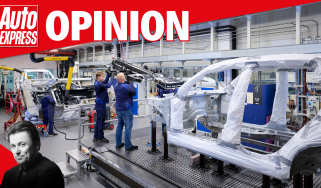
Audi, BMW, Mercedes and VW really need to up their game as the car industry evolves
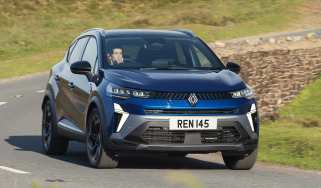
Car Deal of the Day: new-look Renault Captur is yours for just £166 per month
What is Adaptive Cruise Control?
What it does, plus other names for it and how it's different from autopilot and super cruise.
Today’s cars don’t look all that different from the cars of 10, 20, or even 30 years ago, but once you delve past the drivetrain, the seating configuration, or the body style, you’ll find today’s cars share as much in common with a small business computing network than they do with the cars that came before them. The technology in cars has become significantly more advanced over the past decade, bringing the car’s capabilities into the realm of things that were previously only part of the driver’s skill set – things like staying in the intended lane, braking in the event of an emergency, or following at a safe and consistent distance. This latter ability – typically known as Adaptive Cruise Control – is one of the most prevalent and the most useful. But what is Adaptive Cruise Control (ACC)?
A Basic Definition of Adaptive Cruise Control
As the name suggests, ACC is like normal cruise control, except it can adapt. Adapt to what? Typically, ACC systems use a combination of sensors to gauge the distance and speed of the vehicle directly ahead of the subject car, using that data to adjust the throttle and/or brake to maintain the desired following distance and speed. When there is no vehicle ahead, the ACC will function as a standard cruise control system, accelerating to the set speed and maintaining it.
Abilities of Adaptive Cruise Control Systems
ACC systems fall into a spectrum of functionality, as the extensive computerization of the car has led to ACC systems that do much more than merely follow a car ahead at a fixed distance.
Some of today's systems can control the vehicle's follow distance and speed from a stop to highway speeds and back again, with minimal or no input from the driver, like Mercedes-Benz ’s Distronic Plus or Ford ’s ACC with Stop & Go. Some systems, like the standard version of Distronic or Honda ’s ACC, will brake all the way to a stop, but then deactivate themselves. Other systems skip the low-speed functionality in favor of a more traditional high-speed adaptive cruise control system intended for highway usage.
Essentially none of the ACC systems on the market today are standalone systems. Instead, they're integrated into suites of safety technologies and systems, often cooperating with features like lane-keeping assist to provide further driver assistance by doing most of steering for you (but you do need to keep a hand on the wheel). Ford's Intelligent ACC, for instance, wraps up its ACC with Stop & Go and speed limit sign recognition for a sort of low-level autonomous driver assistance system that’s capable of following at a set distance, staying within a lane, and starting up again from a stop with the press of a button.
Although adaptive cruise control is typically considered a premium feature and is often offered as an option, an increasing number of car companies are including it along with those other driver-assist technologies as standard equipment. Toyota , Honda and Mazda , for instance, provide it standard on all trim levels on nearly all their cars.

Different names for Adaptive Cruise Control Systems
“Adaptive cruise control” is a generic term. Although most brands use it, some have their own names for the same type of system. Here’s a list of some alternative names you might come across, but rest assured, they’re just adaptive cruise control.
- Acura: AcuraWatch (a suite of systems that includes adaptive cruise control)
- BMW: Active Cruise Control with Stop & Go
- Honda: Honda Sensing (a suite of systems that includes adaptive cruise control)
- Hyundai, Kia and Genesis: Highway Driving Assist
- Infiniti : Intelligent Cruise Control
- Lincoln : Adaptive Cruise Control with Stop & Go
- Mazda: Radar Cruise Control with Stop & Go
- Mercedes-Benz: Distronic Plus
- Nissan : ProPilot Assist and Intelligent Cruise Control (two systems with different capabilities)
- Subaru : EyeSight (a suite of systems that includes adaptive cruise control)
- Tesla : Traffic-Aware Cruise Control with Stop & Go
- Toyota and Lexus: Dynamic Radar Cruise Control
How is Adaptive Cruise Control Different than Autopilot, Super Cruise or BlueCruise?
All adaptive systems control the accelerator and brake, but some go beyond that. Some can do most of the steering for you on the highway (we call this lane-centering steering assist), but require you to keep a hand firmly on the wheel. Some can go even further than that by making automated lane changes once the driver signals and the car determines it’s safe to proceed.
Tesla’s Autopilot, GM’s Super Cruise and Ford’s BlueCruise go one crucial step beyond that by allowing you to drive without a hand on the wheel. Effectively, they are hands-free driving. There are crucial differences, however. The GM and Ford systems are geofenced to operate in only specific stretches of highway, whereas Tesla’s system operates more freely (for better and for worse). Tesla also does not monitor the driver’s attention as Super Cruise and BlueCruise do. The Lincoln version of BlueCruise, called ActiveGlide , is pictured in action below.
None of these systems are close to what one would consider autonomous driving.

A (Very) Brief History of Adaptive Cruise Control
Adaptive cruise control was pioneered in the 1990s largely by Japanese carmakers including Mitsubishi , Nissan, and Toyota, though Mercedes-Benz, Jaguar, BMW, Audi,, Lancia , Renault , Volkswagen , Subaru, and Cadillac were also early players in the ACC game through the 1990s and early 2000s.
The first ACC system to reach the U.S. market was in the 2001 Lexus LS 430 . The "Dynamic Laser Cruise Control System" used a laser-based sensor to estimate traffic distance.
Types of Sensors for Adaptive Cruise Control
Ever since the earliest days of adaptive cruise control, there's been a wide range of thought about which are the best type of sensors to use to detect traffic and the speeds of nearby vehicles. The earliest systems used laser or radar, and while both of those sensor types remain in use today, today's greater computing power and higher-resolution digital camera sensors have made camera-based ACC possible.
Laser-based systems, though they may sound super high-tech, are susceptible to a number of issues with false readings, especially in inclement weather or when the path of the (invisible) laser beam is interrupted by other debris or foreign objects, including road grime and dirt on the target vehicle.
Radar-based systems function in essentially the same manner as laser-based systems, but with the benefit that radar can penetrate through inclement weather and other obstacles more easily.
Camera-based systems use a totally different operational method, using computers to attempt to recognize objects and features from their visual representations, rather than using time-of-flight of a beam of directed energy like laser or radar. This can make the systems more robust against problems like inclement weather, but can also lead to new problems, like distinguishing between real objects and images of objects, or their shadows. The Subaru Eyesight safety suite, which includes ACC, is a dual camera-based system.
Today, most ACC systems use a combination of laser, radar, or camera sensors to help overcome the shortfalls of each individually.
More Information
- Autonomous Vehicles
- adaptive cruise control
- driver assist
- driver assist technology
Popular Vehicles
Popular new vehicles.
- 2023 Ford Bronco
- 2024 Toyota Tacoma
- 2024 Toyota RAV4
- 2024 Lexus GX 550
- 2024 Ford F-150
- 2023 Toyota Tacoma
- 2024 Toyota Land Cruiser
- 2023 Toyota Camry
- 2023 Jeep Wrangler
- 2024 Mercedes-Benz GLC 300
Popular Used Vehicles
- 2021 Jeep Grand Cherokee
- 2022 Ford F-150
- 2014 Honda Civic
- 2014 Honda Accord
- 2017 Chevrolet Camaro
- 2018 Chevrolet Camaro
- 2022 Toyota 4Runner
- 2014 Chevrolet Silverado 1500
- 2021 Toyota 4Runner
- 2022 Honda Accord
Popular Electric Vehicles
- 2024 GMC HUMMER EV Pickup
- 2023 Tesla Model 3
- 2024 Tesla Model 3
- 2024 Tesla Cybertruck
- 2016 Tesla Model S
- 2023 Lucid Air
- 2024 BMW i5
- 2025 Rivian R1T
- 2017 Tesla Model S
- 2022 GMC HUMMER EV
Popular Truck Vehicles
- 2024 Chevrolet Silverado 1500
- 2024 Toyota Tundra
- 2024 Chevrolet Silverado 2500HD
- 2024 Chevrolet Colorado
- 2023 Ford F-150
Popular Crossover Vehicles
- 2024 Chevrolet Traverse
- 2024 Chevrolet Trax
- 2024 Hyundai Tucson
- 2022 Toyota RAV4
- 2024 Subaru Outback
- 2025 Chevrolet Trax
- 2023 Toyota RAV4
- 2024 Ford Bronco Sport
Popular Luxury Vehicles
- 2022 Lexus IS 350
- 2024 Land Rover Defender
- 2014 Mercedes-Benz E-Class
- 2019 Chevrolet Corvette
- 2024 Lexus RX 350
- 2014 Mercedes-Benz C-Class
- 2024 Porsche 911
- 2024 Mercedes-Benz Maybach S 680
Popular Hybrid Vehicles
- 2024 Toyota Sienna
- 2024 Ford Explorer
- 2025 Toyota Camry
- 2023 Ford Explorer
- 2022 Ford Explorer
- 2024 Toyota Venza
- 2023 Toyota Sienna
Popular Makes
Featured makes, product guides.
- The Best Electric Bikes
- The Best Car Covers
- The Best Portable Air Compressors
- The Best Car GPS Trackers
Choose a Display Name
Please enter a display name

Sign in to post
Please sign in to leave a comment.
- Account Settings
- Aston Martin
- Lamborghini
- Mercedes-Benz
- Rolls-Royce
Car Reviews
Car comparisons, auto resources.
- Auto Insurance
- Auto Glass Repair
- Auto Warranty
- Product Roundups
Top stories

- Featured Articles
What is Adaptive Cruise Control?

With semi-autonomous active safety systems becoming commonplace, more and more vehicles are beginning to offer adaptive cruise control as either optional or standard equipment.
You have probably seen the words ‘Adaptive Cruise Control’ printed in advertisements and mentioned in car reviews, but what exactly is it? In this post, we’re going to answer that and other frequently asked questions with regards to adaptive cruise and also give you a brief backgrounder on the history of the technology. We’ll also touch upon other radar, lidar and camera-based active safety technologies that adaptive cruise control technology helped to make possible, such as collision mitigation braking.
As you probably already know, a normal cruise control system allows you to set a vehicle speed using a button, say 100 km/h, for example, and then coast at that speed without having to make any throttle inputs.
SEE ALSO: The Pros and Cons of Conventional and Adaptive Cruise Control
With normal cruise control, it typically only works for highway driving where there is no traffic because hitting the brakes will cancel cruise control and it’s up to the driver to adjust your vehicle’s speed to the flow of traffic using the brakes.
Adaptive cruise control will do this automatically, using radar, lidar or cameras to detect the speed at which vehicles in front are moving and then automatically adjusting the speed to match and keep a safe distance. The driver can use buttons (usually located on the steering wheel) to a set a car length-based distance from the vehicle ahead, ranging from 2-4 car lengths in many vehicles. The distance is often displayed using bars, sometimes in the TFT display in the vehicle’s instrument cluster.

There are a few different types of cruise control on the market today offering different levels of capability. Full adaptive cruise control, such as Mercedes-Benz’s Distronic system, will offer ‘Traffic Jam Assist’ or ‘Stop & Go’. These higher-end systems have no speed restrictions and will bring the vehicle to a full stop if necessary and also progressively accelerate up to the preset speed when the car in front has moved. Sometimes if the car has stopped for more than a predetermined time, say, 7 seconds, for example, the driver has to hit the accelerator briefly or resume driving using a button on the steering wheel.
ALSO SEE: CVT Transmission Pros and Cons
Adaptive cruise control in some cheaper vehicle models won’t have full Stop & Go functionality and will be restricted to highway speeds and not bumper-to-bumper traffic, but will usually be paired with a forward collision warning and/or collision mitigation system. These systems will alert you when an object is within a certain range of the front of the vehicle, alerting the driver in the event they aren’t paying attention. If the vehicle gets too close to an object without the brakes being applied, it will begin to brake automatically — so long as the vehicle has collision mitigation braking as well.
Technology likes this can make the driving task easier. Standard cruise control and adaptive cruise control are helpful in long-haul driving scenarios, while the more advanced adaptive cruise control can alleviate stress in traffic. Forward collision alert and collision mitigation braking attempt to reduce the chances of drivers being involved in rear-end collisions, which are on the rise in the U.S. in part due to distracted driving from cellphone use.
Cool! So How Does it Work?

There are a few different types of adaptive cruise control on the market. Some systems are radar-based (these are the most commonplace), while others use cameras or a combination of radar and cameras. Some systems are laser-based, although these are much less common these days.
A radar-based system, such as Toyota’s Dynamic Radar Cruise Control system, use a front-mounted radar transmitter to detect objects ahead. The radar will detect how far away a vehicle is in real-time and communicate this information with your vehicle, allowing it to maintain a consistent distance from the vehicle ahead as you drive down the road. Some of these radars will be built into a vehicle’s front fascia or worked into the existing grille badge, like the Genesis fascia pictured below.

A camera-based system, such as Subaru EyeSight , uses cameras to scan the road ahead. These systems will use a computer to read the camera’s image and help to detect and identify various objects on the road including vehicles and pedestrians. EyeSight is a bit more simple and straightforward than comparable adaptive cruise control systems and enables Subaru to implement semi-autonomous safety tech on most of its vehicles.
A radar and camera-based system, like Mercedes-Benz’s Distronic Plus system, uses both radars and cameras to scan the road ahead. The cameras can pick up some information that radar may not be able to, such as traffic sign data, vehicle brake lights and turn signals, while radar scans for vehicles and objects in the vehicle’s direct path. This all-seeing radar/camera combo is usually implemented to enable advanced semi-autonomous functions, such as the Lane Steer Assist and Stop & Go Pilot Traffic Jam Assist. Tesla Autopilot also uses a combination of radar and cameras to enable semi-autonomous functionality.
And How Do I Use It?
This will vary from manufacturer to manufacturer. Most adaptive cruise control systems will operate much like normal cruise control, though. First, set your desired cruising speed. You can then use the distance adjustment buttons to change the following distance from the vehicle ahead. Most automakers display the distance using bars, with 1-4 distance settings usually offered. Follow distance will typically range from 1-4 seconds.
Just like normal cruise control, you can tap the brake to switch the system off or use the on/off button – usually located on the steering wheel. The ‘+’ and ‘-‘ buttons you use to adjust the speed with normal cruise control operate the same way with an adaptive cruise control system.
We highly suggest referring to your vehicle’s owner’s manual before using adaptive cruise control out on public roads. For a rough explanation of how to use such a system, though, we’ve embedded a how-to video below on how to use Honda’s adaptive cruise control system.
Here’s an important reminder: Using adaptive cruise control and even Tesla’s Autopilot still requires a driver’s full attention, so systems still require a driver’s hands to be on the wheel at all times, even if lane-keep assist is active. These tools exist to help make your drive safer and less stressful but it doesn’t mean you can read a book, play a game on your phone, take a nap, or resign your responsibilities as a driver.

Sam McEachern holds a diploma in journalism from St. Clair College in Windsor, Ontario, and has been covering the automotive industry for over 5 years. He conducts reviews and writes AutoGuide's news content. He's a die-hard motorsports fan with a passion for performance cars of all sorts.
More by Sam McEachern
Join the conversation
Popular articles.

These Are The 5 Most Popular Vehicles In America So Far This Year

How To Waste Less Oil in Older Vehicles

Tesla Owner Tries To Charge From Power Line; Catches Fire Immediately

Best Small SUV | Testing (almost) Every Compact SUV

Affordable Cars With Surprisingly Higher-End Interiors: Top 10
Latest comparisons.

Comparison Test: 2024 Kia EV9 vs 2024 Mazda CX-90 PHEV

2024 Porsche Cayenne S and Cayenne Coupe Review

What’s the Difference Between the 2023 and 2024 Subaru Crosstrek?

Volkswagen Atlas SE Vs SEL: Which Trim is Right for You?

Hyundai Palisade Vs Mazda CX-90 Comparison
Car buying tools.
- How to Buy a Car
- Free dealer Price Quote
You may also be interested in

Is A Level II Home EV Charger Worth It?

The Plug-in Hybrid With the Longest Range: Top 10 List

The Pros and Cons of Conventional and Adaptive Cruise Control

Top 10 Affordable Cars With Adaptive Cruise Control
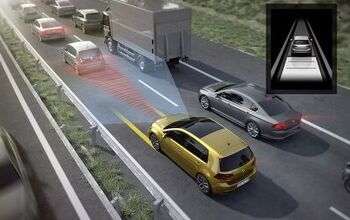
What is Automatic Emergency Braking?
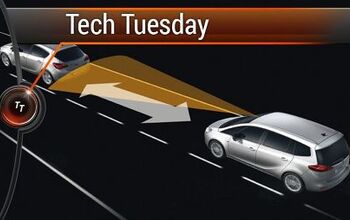
Adaptive Cruise Control Seeping Into Affordable Segments

Ford Introduces Technology to Inhibit Speeding

Firestone Firehawk Indy 500 Tire Review

3 Pros and 2 Cons Why the BMW M440i Gran Coupe Is Better Than a M340i

Day-To-Day With The Ford Ranger Raptor

30 Design Sketches From The BMW Skytop Concept

2024 Porsche 718 Boxster GTS 4.0 Review: Get ‘Em While You Can
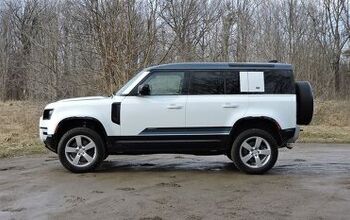
Land Rover Defender Proves Boxy is Beautiful

3 Reasons the Jeep Gladiator is an Unusual Pickup Truck
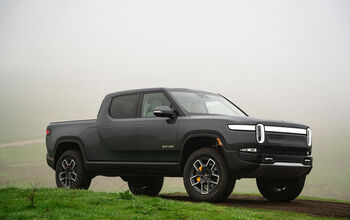
Rivian To Add New Trims To The R1T And S Lineup Soon

The 2024 Range Rover Velar Remains as Stylish as Ever

Ford Offering 0% Interest On Mustang Mach-E
- Car technology
Cruise control and adaptive cruise control explained
Cruise control is a handy feature for long journeys – we explain how to use it.
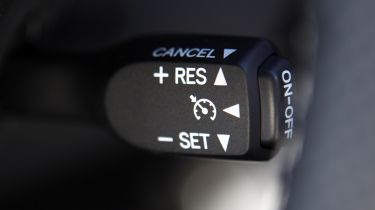
Cruise control has become a common feature in modern cars, allowing drivers to maintain a steady speed without using the accelerator pedal. Ideal for long motorway drives, traditional cruise control allows you to set a specific speed, giving your right foot a much-needed break. While this tech has been around since the 1960s, the system has evolved in recent decades. The latest adaptive cruise control (ACC) systems use sensors to monitor the traffic ahead, automatically adjusting your car’s speed to maintain a safe following distance.
Different carmakers have their own versions of these systems – Audi’s ‘Adaptive Cruise’, BMW’s ‘Active Cruise Control’, and Volvo’s ‘Pilot Assist’ are just a few examples – and some are more intelligent than others, even changing lanes and steering autonomously. Some cars are also equipped with ‘Traffic Jam Assist’, which can handle stop-and-start traffic, easing the stress of daily commutes.

From straightforward speed control to sophisticated, traffic-responsive systems, cruise control technology can help to take some of the stress out of long journeys. Read on to explore how these features work and how to use them.
What is cruise control?
Cruise control is a system that maintains the speed of a car automatically. Using controls found on or behind the steering wheel, the driver can set a desired speed that the car will continue to follow without any use of the accelerator pedal. It’s found in cars with an automatic or manual gearbox, although its functions are usually more limited in the latter. Most electric cars also come with cruise control.
It’s designed to be used on long A-road or motorway journeys, when prolonged use of the accelerator pedal could cause cramp or soreness in the driver’s right foot. Once a speed has been set, the driver can relax their foot and focus on controlling the car’s steering. The first cruise control systems held the throttle open mechanically, but modern systems are computer-controlled. Many cruise control systems will only activate above a certain minimum speed, usually around 25 to 30mph.
What is adaptive cruise control?
Adaptive cruise control (often abbreviated to ACC) is a more advanced cruise control system that uses lasers, cameras or radar mounted in the front bumper to track the speed and position of the vehicle in front. Cars fitted with the system can automatically match the speed of the vehicle in front and maintain a safe distance. Many systems allow the driver to set their preferred distance to the vehicle in front.
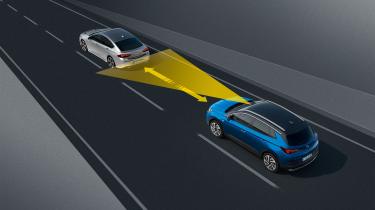
If the vehicle ahead slows down, the driver’s car will also slow down without the need to use the brake pedal. If the vehicle ahead speeds up, the driver’s car will only speed up until it reaches the limit set by the driver. However, only systems paired with an autonomous emergency braking (AEB) system will automatically perform an emergency stop if the car ahead comes to a sudden halt. In 2024 AEB was made a legal requirement for all new cars sold in the UK and the EU.
Adaptive cruise control is sometimes referred to as ‘dynamic’ cruise control, while other automakers use their own names; Mercedes calls it ‘Distronic Plus’ and Porsche, ‘Porsche Active Safe’.
Some vehicles even have ‘Traffic Jam Assist’, an extension of adaptive cruise control that can automatically slow the car to a halt as well as accelerate and brake at low speeds in congestion, reducing driver fatigue. It’s worth noting that after coming to a halt for more than a few seconds, safety requirements mean driver intervention is usually required; squeezing the accelerator should allow Traffic Jam Assist to resume.
How do I use cruise control?
Check your car’s handbook for the location of the cruise control buttons as they differ from vehicle to vehicle. They are often found in an easy-to-access location, such as on the steering wheel or column stalk, to make them quick and safe to use.
The system can be overridden at any time by pressing on the brake pedal, so you should keep your foot close to the brake in case of emergencies. There may be differences in controls between different manufacturers, so always read your car’s handbook first. Some typical cruise control buttons include:
- On/off: This activates the system, but probably won’t hold you at your desired speed. Turning it on will almost always be accompanied by a dashboard light.
- Set: Once the system is switched on, pressing the set button should tell the car to hold the current speed. In most cars this will turn the dashboard indicator green.
- Cancel: This pauses the cruise control, so you have complete control again, without turning cruise control fully off. The cruise control should still remember the speed you chose to cruise at.
- Res or resume: Pressing this will see the car accelerate back up to the speed you chose before hitting the cancel button or pressing the brake pedal. You'll still need to change gears in a manual car if necessary. An automatic gearbox will change gears for you.
- Up and down arrows or ‘+’ and ‘-’: With cruise control activated, use these to increase or decrease the car’s speed. Single presses often increase or decrease the speed in small increments, while holding the same button or stalk changes it in increments of 5mph or even 10mph. Of course, this varies from one model to another.
Cruise control is best used on long stretches of motorway and should be used to maintain a safe speed while the driver pays full attention to their surroundings. Drivers should not treat cruise control like an autonomous driving system, and the driver needs to pay as much attention to the road when using cruise control as they do with regular driving.
What is a speed limiter?
Some cars are fitted with a speed limiter, either alongside cruise control or on its own. As with cruise control, you set the maximum speed you’d like to travel at, but unlike cruise control, you're still required to press down the accelerator. This is ideal for busy speed-limit zones, where you may want to maintain complete control of your speed without exceeding the limit. Squeeze the accelerator, and your car will simply reach your chosen speed and stop accelerating. However, pressing the throttle pedal all the way down will override the system –it’s a fail safe designed to let you accelerate out of trouble if needed.
What about Intelligent Speed Assistance?
Like Autonomous Emergency Braking (AEB), Intelligent Speed Assistance (ISA) is another mandatory safety feature fitted to every new car sold in the UK and the EU from 2024. Unlike a traditional speed limiter above, the ISA system uses your car’s GPS and traffic sign recognition cameras to determine the road’s speed limit. The ISA system then limits your car to this speed, stopping you from breaking the speed limit.
The system can be overridden in certain situations when the driver pushes hard on the accelerator pedal, and it can be turned off entirely. However, the system is automatically reactivated every time you start the car. From July 7th 2024, it is a legal requirement for every new car sold in the UK to come with the technology, including unsold new cars sitting in dealerships that will need to have the system retrofitted.
What is the benefit of cruise control?
When should i use cruise control, is cruise control safe, does cruise control save fuel, car technology made simple….
- What are brake pads and discs?
- What is autonomous emergency braking?
- What is ESP on a car?
- What is traffic jam assist?
- What are blind spot monitoring systems?
- What is cross traffic alert?
- Euro NCAP: how safe is my car?

Charlie writes and edits news, review and advice articles for Carbuyer , as well as publishing content to its social media platforms. He has also been a regular contributor to its sister titles Auto Express , DrivingElectric and evo . As well as being consumed by everything automotive, Charlie is a speaker of five languages and once lived in Chile, Siberia and the Czech Republic, returning to the UK to write about his life-long passion: cars.
Recommended
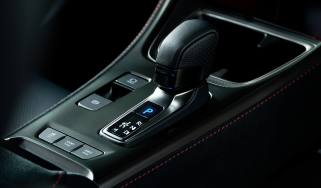
What is a CVT gearbox? Reliability, pros and cons
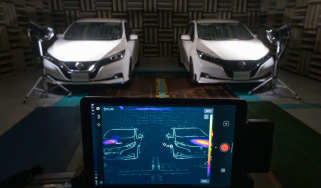
Turn off the air-con! New Nissan ‘cool’ car paint cuts cabin temp by 5 degrees
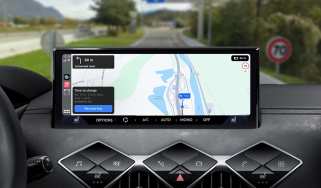
Stellantis e-Routes app brings advanced EV route-planning to Apple CarPlay and Android Auto
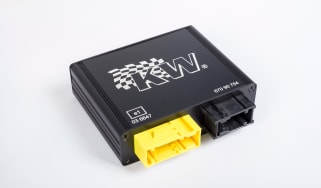
Car ECU explained: What it does, faults and repair costs
Most popular.
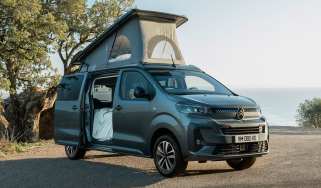
New Citroen Holidays is a £57k campervan with a not-so-subtle name

Best new car deals 2024: this week’s best PCP finance offers
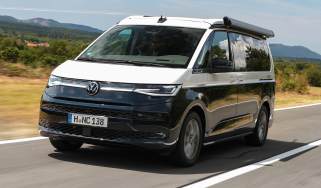
Volkswagen California review – the class-leading camper, despite its flaws
Tips & advice

Car dashboard warning lights: the complete guide

Electric car charging stations: public networks, charger types, apps and maps

PCP vs HP – which type of car finance is right for you?

Average speed cameras: how do they work?

Top 10 best car interiors

Top 10 best electric cars 2024

Top 10 best cheap-to-run cars 2024

The UK's top 10 fastest hot hatchbacks 2024
Active Cruise Control explained

More and more cars are coming out with Active Cruise Control, but what is it and how does it work?
BY WAY OF background, Cruise Control, as opposed to Active Cruise Control, (ACC) has been around since the 1960s and is now, more or less, a standard feature on all new cars, including trucks, tractors and even large “Cruiser” type motorcycles.
The normal cruise control we’re all used to allows a driver to set a speed and then the car will maintain that speed without the driver needing to touch the accelerator pedal. Then when the driver needs to adjust the speed, they can either do so via the cruise control stalk and/or buttons on the steering wheel, depending on the make and model of vehicle. The driver can also deactivate cruise control via the brake pedal, or momentarily increase the speed, say, when overtaking, by pressing the accelerator pedal. Cruise Control may return to the preset speed if you have deactivated it by pressing the accelerator, but will always disengage entirely if you have used the brakes or changed gear in a manual. Check your car’s owner manual for confirmation of that function on your car.
Older cruise control systems simply used the throttle, so would let the car speed up beyond the target speed on downhills. Newer systems use the brakes and even gears to properly maintain the target speed up or down hill.
Now cruise control has evolved to being able to adjust its speed based on the speed of the vehicle in front. Often used interchangeably, Active Cruise Control and Adaptive Cruise Control are one and the same – as usual manufacturers like to invent different names for the same technology. At least they’re both abbreviated to ACC!
What is Active Cruise Control?
Well, it works in similar way to your regular cruise control. The driver brings the car to their desired speed and presses the set button, then the car maintains that speed. The ‘active’ part is that your car will slow down if your car detects another car in front travelling more slowly. That’s perfect for freeway driving, particularly in traffic, and longer trips. The Active component of Active Cruise Control comes in the form of a RADAR or LIDAR sensor (depending on your manufacturer’s choice of technology) in the front of the car. This sensor allows you to set the distance you want to follow the car in front, normally measured in time, typically 2, 3 or 4 seconds.
For instance, let’s say that you have your ACC set at 105km/h and a slower vehicle pulls out in front of you further up the road doing a mere 90km/h. ACC is designed to pick this up and slow your vehicle down to match the speed of that vehicle, and follow at the distance that you have set. When that vehicle moves out of your lane, and there are no other cars in front of you, your car resumes your original 105km/h. It does all this without any throttle or brake inputs from you. But the system isn’t perfect, and we’ve got more on that below…
So, is ACC helpful?
Yes. Active Cruise Control was designed with high-volume commuter traffic in mind. Where speeds are constantly changing from 100km/h to a dead stop with not much warning. It only takes one driver not paying attention for 1-2 seconds for an accident to happen. Boredom, fatigue and in-car distractions are the biggest cause of accidents on the roads today.
How much does ACC cost?
When this sort of radar technology first appeared it was as a $1500 cost option on the $220,000+ 1999-model Mercedes-Benz S-Class . Today, the average price point of cars with this type of feature as standard is approximately $60,000, so a lot of cars above that price point will feature ACC as standard, primarily European and Asian cars. The great news is that this type of technology is becoming a priority to more manufacturers, who are making it available in more affordable cars. Mazda have it as standard in both their top spec Mazda6 Atenza ($48,510+ORC) and Mazda3 Astina ($38,190+ORC), though it can’t be cost-optioned in lower models.
Subaru offer it as standard equipment on the top-spec Forrester and Outback models, and all of the Liberty range. The latter are the only vehicles in Australia that offer the feature in a sub-$30K car ($29,990+ORC). Interestingly Subaru are one of the few manufacturers that don’t use radar technology for this feature. Instead they use an optical system called Eyesight based on stereoscopic cameras placed on either side of the rear view mirror.
On the flip side you can still spend $95,000-plus on an HSV GTS and not be able to access this type of technology.
Is it a tick box on the option list?
Not necessarily. ACC will usually be part of a suite of safety features that some manufacturers refer to as ‘Forward Collision Warning’. These systems are always active and commonly include, lane departure warnings, lane departure assist, brake assist, pedestrian detection and so on. Because all these systems use primarily the same radar, laser or camera system (in some cases, a combination) as the ACC, they will be combined and marketed as a whole safety system depending on the manufacturer and the vehicle.
Do all ACC systems work the same?
No. There are a lot of variations between manufacturers and even differences from model to model under the same marque. Some ACC systems only work between 40km/h and145km/h and others can be active from stop all the way to 250km/h, requiring a touch of the accelerator to get going again if it does happen to bring you to a stop. None should be fully trusted.
Heavy rain, fog and snow can interfere with the capabilities of these systems, and heading into the sun can throw out the camera-based systems. Windy roads and cars that dive in to gaps in front of you can confuse the ACC which may not react in time. The ACC may not detect long overhanging loads on trucks, or narrow vehicles like motorcycles. It is critical to understand the limitations of the system and be sure that you are only using these systems as a back up to your own driving. Don’t think it’s a set and forget kind of thing; you must still be paying attention to what’s happening around you.
Remember your set speed too. You might have set it for 100km/h and then spent many minutes in traffic below 50. All of a sudden once the road is clear the car will accelerate… and that might take you by surprise. But overall, ACC is very useful because it means you don’t need to fiddle with the cruise control when driving in heavy traffic on freeways.
If you do own or buy a car with this feature, make sure you take some to get a feel for how it works. If you’re like me, the sensation of something else controlling the car that you’re driving will be weird for the first few times.
Is it a Gimmick?
No, it’s genuinely useful, which is not something we can say all of the latest driver aids. With every new model release, more and more of this technology is being introduced. Fully automated vehicles are already being tested in different parts of the world and what we are seeing in the market place today, are the trickle down effects from that innovation.
With tech giants Apple and Google investing heavily in this type of automation for cars, the days of drumming along on your steering wheel (Google’s automated prototype was revealed without a steering wheel, but court rulings have dictated it be set-up for manual control) to your favourite song are numbered. Shame.
Jeep reveals seven concepts for the Easter Jeep Safari
Virtually drive the 2015 mazda mx-5 via xbox.
About Author
Lachlan wornes.
Whether it is trying to name a car just from its exhaust note, to being able to identify it from only a partial view of a tail light, Lachlan always finds himself wanting to know more without ever having to make a conscious effort to do so. He loves to look at them, listen to them and talk about them. Somehow driving them always makes him feel excited and relaxed at the same time. Growing up in rural Victoria made for some very liberal driving experiences from a very young age, which may have something to do with the passion that still exists. After spending all his 20’s in the snow fields of North America, the 9-5, 40hr work week never really suited him. After a brief stints with Road Magazine in the UK, and Jalopnik in the US, he has found his way back home to do what he loves, where he loves to be.
Škoda Octavia 2016 ,considerably cheaper than$30k, comes with ACC as standard equipment. Probably standard on the whole Skoda range.
Leave a Reply Cancel reply
Your email address will not be published. Required fields are marked *
Save my name, email, and website in this browser for the next time I comment.
Sign me up for the newsletter!

LED headlights 101
Username or Email Address
Remember Me
What You Need to Know About Cruise Control

Your changes have been saved
Email is sent
Email has already been sent
Please verify your email address.
You’ve reached your account maximum for followed topics.
Camaro Coupe
Distinguishing between basic and adaptive cruise control.
They've been equipped on vehicles for many decades, but what does cruise control actually do in a car? Early examples did little more than maintain a selected speed, with the driver then taking over if that speed becomes unsafe for any reason. This reduces fatigue or the likelihood of inadvertently exceeding the speed limit, especially over longer distances. Cruise control is what many Americans demand, owing to our extensive road network.
Modern systems, often termed adaptive cruise control (ACC), are far more advanced. They quite literally 'adapt' to changing traffic conditions. These systems utilize several sensors to automatically keep an appropriate following distance from the preceding car. Without human intervention, the car can slow down or accelerate, accounting for the typical fluctuations in speed that occur in everyday driving.
ACC was once the preserve of luxury sedans, but now it can be found on nearly any SUV and even hard-working trucks.
What’s in a Name - Different Types of Adaptive Cruise Control Systems
Not only are there different kinds of cruise control systems, but depending on the manufacturer, they will have unique names. Below are a few examples of similar systems but with different names:
- BMW's Dynamic Cruise Control or Active Cruise Control
- Cadillac's Super Cruise
- Tesla's Autopilot
- Nissan's Intelligent Cruise Control
- Mercedes-Benz's Active Distance Assist Distronic
So, what is an ACC system from BMW and how does it differ from one made by Audi or Mercedes ? Fundamentally, many of these systems function in exactly the same way and merely carry unique names. In some cases, an aftermarket system can be fitted to a vehicle without standard speed control. If you take this route, make sure that the installation is done by a reputable company.
How Does Modern Cruise Control Work?
Adaptive cruise control is what makes semi-autonomous driving possible. In general, a car with ACC incorporates some combination of radar sensors, lasers, and cameras to identify other vehicles or obstacles in the vicinity. Radar- and laser-based systems both make use of sensors integrated into the vehicle's front fascia. This information is transmitted to the car's mechanical systems, which respond accordingly. That's a cruise control definition in a nutshell.
Notably, a laser-based sensor can struggle during storms or other periods of low visibility. Radar cruise control is used by automakers like Toyota . Another type is binocular computer vision systems, where tiny cameras installed on the back of the rearview mirror can pick up on objects ahead of your car.
Some iterations of a cruise control system will merely alert the driver to take action if a preceding vehicle gets too close. Other systems will take evasive action and brake the car automatically. Modern stop-and-go systems, often termed traffic jam assist, takes the hassle out of navigating rush hour traffic.
In terms of mechanical speed control, an actuator is employed to which a cable is connected. This setup actuates the throttle valve, effectively performing the same job as you would if you depressed the gas pedal with your foot. Another component is the speed control module, effectively the "brains" behind the system that remembers the desired speed.
How to Operate Cruise Control
It's always a good idea to consult your owner's manual for guidance on how to use cruise control. As with many vehicle functions like switching on lights, operating the ventilation system, or even using the indicator, each automaker does things slightly differently. For the most part, the process is the same. You will set your desired speed as well as the gap you'd like to maintain from the preceding vehicle. From there, it's simple. The car does the hard work and will stick to either the chosen speed, the following distance, or both simultaneously.
However, as systems differ, it's important to take some time to acclimatize to your car's specific ACC. Some will only provide minimal braking before we need to intervene, while other cars can stop completely. In both cases, it's important to remain focused on your surroundings. Some vehicles allow you to choose how aggressively the system slows down or picks up speed. At times, you may want to stick to the basic speed control setting when there will be minimal slowing down.
In inclement weather conditions or when it's raining, the sensors can't always operate as effectively. In these conditions, it's advised not to use the ACC. If the feature is not working as you know it should, it's best not to activate it at all.
Before buying a particular model with ACC, it's worth going for an extended test drive to ascertain if the feature improves your driving experience.
- Car Technology

- Sell my car
- My Shortlist
Sign up / Sign in
- New to Carsguide? Sign up
- Welcome back! Sign in
- Edit Profile
- Find a Dealer
- What car should I buy?
- Instant Cash Offer
Browse over 9,000 car reviews
Family focused reviews and advice for everything family car related.
Off-road for beginners and the experienced, plus camper trailers, caravans and motorhomes
Utes, commercial vehicles and tow tests
We make it easy to compare design, practicality, value and more
Buying used? Here's what to look out for and buy smart
Your thoughts could drive you to more than just your next destination 🚗💬
Buying guides
Our experts pick the top models
- People mover
- Convertible
What's happening in the automotive world
Get to know the personalities behind the team every week
The stars of the latest big events
The most interesting hints of what's to come
What's been recalled and why. Are you affected?
The latest and future car tech from around the world
We're here to help you with any car issues
Looking for tips on how to carry or travel with your family?
How To, off-road tips and adventure travel destinations
Not just utes. Detailed advice for you - the tradie - on what car is right for you and your job
Looking for an answer? Our automotive experts are here to help
If you're wondering, we've probably got the answer
Unsure of your car's maximum towing capacity? We've listed all relevant models here.
Wondering how much air to put in your tyres? Our database has the answer
Everything you need to know to keep you and your family as safe as possible
Helpful advice before you finance your next car
Tips for getting the right insurance and how to make a claim
Everything you need to know when sizing up your new car
- pricing + specs
adventure guide
- Trips and Trails
- Camper-trailer Reviews
family guide
- Family Advice
- 7 Seat SUVs
tradie guide
urban guide
- Armstrong Siddeley
- Asia Motors
- Aston Martin
- Austin Healey
- Automobili Pininfarina
- Corsa Specialized Vehicles
- EV Automotive
- International
- Lamborghini
- Mercedes-Benz
- Mitsubishi Fuso
- Pininfarina
- Rolls-Royce
- Vanden Plas
Adaptive cruise control explained
- Urban Hacks
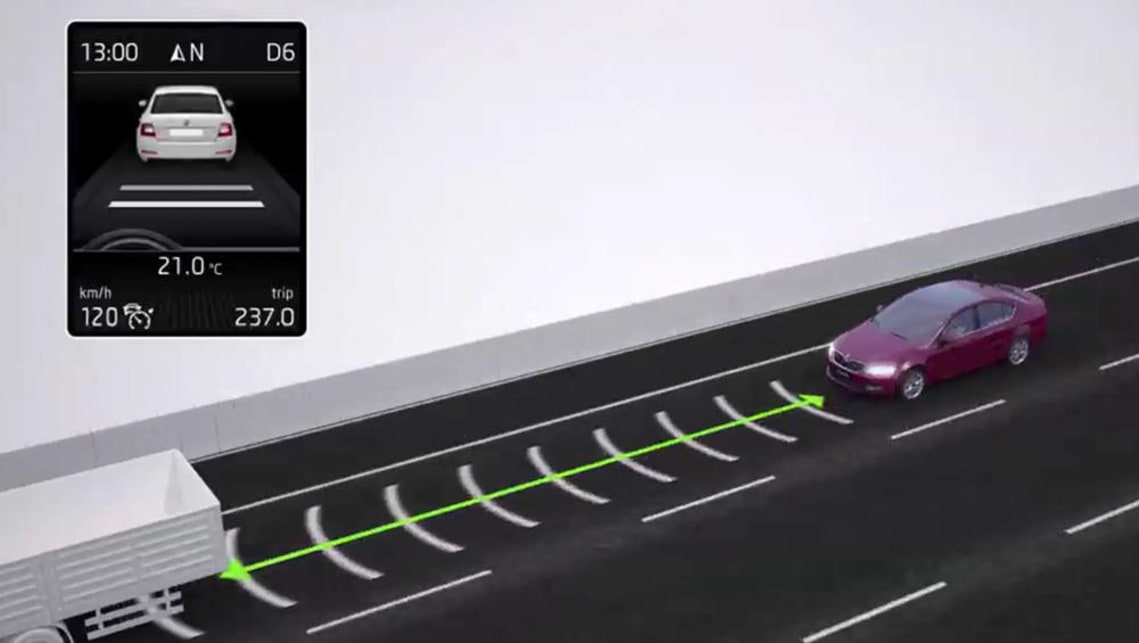
In theory, traditional cruise control systems are flawless. Find yourself a long road, dial in a speed of your choosing, and, with precious little steering to worry about on Australia’s endlessly straight highways, you can simply sit back and relax.
Real life, unfortunately, is a little more complicated, and if you’ve ever rounded a blind turn with the cruise control set to 110km/h, only to find yourself charging into a herd of slow-moving, or stationary, cars, you’ll know the heart-pounding panic that comes with desperately searching for the brake pedal.
Likewise, when a car to your left attempts a Frogger-style lane change, despite travelling 30km/h slower than you, a cruise control system that’s got you locked to a particular speed goes from handy to hazardous in a hurry.
An adaptive cruise control system, also known as active cruise control, helps mitigate those risks by automatically adapting to changing traffic conditions, slowing down or speeding up with traffic as needed.
Way back in 1992 (the same year Australia’s one- and two-cent coins were withdrawn from circulation), Mitsubishi was putting the finishing touches on a world-first laser-based technology it dubbed its Distance Warning System.
The majority of systems are now radar-based, and constantly measure the road ahead for other cars.
While it was unable to control the throttle, brakes or steering, the system could identify vehicles ahead and alert the driver to begin braking. Rudimentary, sure, but it was the first baby step toward the adaptive cruise control systems used today.
By 1995, Mitsubishi had tweaked the system to begin slowing when it identified a car ahead, not by braking but by reducing the throttle and downshifting gears. But it was Mercedes who reached the next big breakthrough in 1999 when it introduced its radar-based Distronic cruise control. The German system could not only adjust the throttle to maintain a safe distance from the car in front, but could also apply the brakes if necessary.
The Distronic system was an auto-industry first, and was introduced on Mercedes’ traditional outlet for its newest technology: the then all-new (and circa-$200k) S-Class . So cutting edge was the system that even on its most expensive model, Distronic was an extra-cost option.
For the next decade, the technology was exclusive to the flagship models of premium marques, including BMW ’s Active Cruise Control, added to the 7 Series in 2000, and the Audi Adaptive Cruise Control system, introduced on the A8 in 2002.
But where the luxury brands go, everyone soon follows, and cars with adaptive cruise control are available from just about every manufacturer in Australia. And the technology is more accessible than ever before. The Volkswagen Adaptive Cruise Control system, for example, has been shared across its vast range of cars, with the technology now standard on the entry-level Skoda Octavia , yours from $22,990 (MSRP).
So just how does this marvel of modern technology work? The majority of systems are now radar-based, and constantly measure the road ahead for other cars. The driver (that’s you) then dials in not just their desired speed, but how big a gap you want to leave between you and the car ahead, which is usually measured in seconds.
The program will then maintain that gap, regardless whether the car ahead slows down, gets stuck in traffic or, on the better systems, stops all together. When the traffic ahead speeds up, so will you – topping out at your pre-determined top speed. And if a car should pull into your lane unexpectedly, your car will automatically brake, maintaining the same gap between the new car in front.
The speeds at which the system works, along with exactly what situations it will respond to, varies depending on the manufacturer, so have a good read of your owner’s manual before you fully invest your trust in it.
It’s impressive technology, but it’s not without its drawbacks, the biggest of which being that if you’re not paying attention, you can find yourself stuck behind a slow-moving car for endless kilometres as the system automatically adjusts its speed to maintain its distance, before you finally notice and overtake.
But that’s probably a small price to pay for a system that can save you from the unexpected.
How much do you depend on cruise control systems? Tell us what you think in the comments below.
Related content.

Get the latest news, reviews and advice every week
Related cars for sale.
::price:: ::priceSuffix::
Cars guide stories & articles.

Skoda Kamiq 2025 review
1 August 2024 · Tom White
Mitsubishi ASX 2024 review: ES
19 July 2024 · John Law
Lexus LBX 2024 review: Luxury 2WD
6 July 2024 · Emily Agar
Mini Countryman 2024 review: S
28 June 2024 · Richard Berry

GWM Haval Jolion 2024 review: Ultra Hybrid
26 July 2024 · Andrew Chesterton
Volvo EX30 2025 review: Twin Motor Performance Ultra
19 August 2024 · Emily Agar
BYD Atto 3 2025 review
18 August 2024 · Stephen Ottley
Nissan Qashqai 2024 review: Ti e-Power long-term | Part 3
16 August 2024 · Andrew Chesterton
expert guide

Mini Cooper 2025 review: S
17 August 2024 · Byron Mathioudakis
Porsche Taycan Cross Turismo 2025 review: snapshot
16 August 2024 · James Cleary
Porsche Taycan Turbo S 2025 review: snapshot
14 August 2024 · James Cleary
Nissan Z 2025 review: Nismo
12 August 2024 · Byron Mathioudakis

Volkswagen Touareg 2025 review: 210TDI Elegance
20 August 2024 · Emily Agar
Audi SQ7 2025 review
15 August 2024 · John Law
Hyundai Santa Fe 2025 review: Hybrid FWD
11 August 2024 · Emily Agar
Mercedes-AMG GLC43 2024 review: SUV
28 July 2024 · Emily Agar

- Entertainment
- Submit Your Story
Explained: The different kinds of cruise control and how they work

Hands-free driving may be a relatively new innovation – but foot-free driving has been around for decades. In fact, the first cruise control systems were installed over 60 years ago – and in many ways they operate identically to the systems found today.
But what exactly is cruise control? Put simply, it’s an automatic system which keeps your car at a constant speed with as little variation as possible. The inventor, Ralph Teetor, was said to have come up with the idea after a frustrating journey with his lawyer, who sped up and slowed down as he talked.
How do you use cruise control?
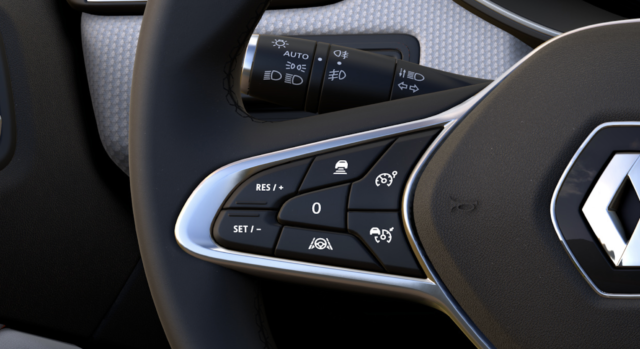
Cruise control is offered as standard equipment or at least as an optional extra on nearly every new car sold in the UK – though you may need to look a bit harder for it if buying an older vehicle. Basic systems are usually operated by a control either on the steering wheel or a steering column stalk.
Cruise control consists of an up/down (or +/-) control, as well as a ‘Set’ button, a ‘Recall’ button and sometimes an on/off button. The driver brings the car up to their desired speed, and if the system is switched on, pressing ‘Set’ will store that speed in the car’s memory.
The vehicle will then take control of the accelerator, keeping the car at the desired speed for as long the driver wants. Fine-tuning of the speed can be achieved with the +/- controls, and the target speed is often shown on a dashboard display.
The system is switched off in two ways – either with external input, such as the driver pressing the throttle or brake, or by using the on/off switch. At this point, the desired speed is still usually stored in the car’s memory, and that’s what the ‘Recall’ button is for – allowing the driver to return to their previous speed after passing an obstruction, junction or traffic.
What are the other kinds?
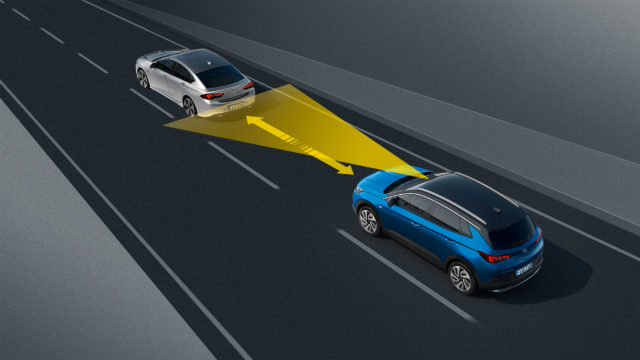
There’s not really much you can innovate on cruise control, but car manufacturers have managed to do it – and come out with adaptive cruise control and advanced adaptive cruise control.
Adaptive cruise control adds a scanner to the front of the car, usually a camera, radar, or laser array – or some combination of the three. This continuously scans the road ahead for traffic and is able to detect when there’s a car in front.
The system then alters your car’s speed so that instead of closing the gap to a slower-moving car, it will follow it at a set distance – controllable by the driver. The car will continue to match the speed of the car in front until it changes lane, exits the road or the driver overtakes.
Advanced adaptive cruise control adds an extra layer to this, as it’s capable of altering the cruise control’s speed limit to match the speed limit of the road it’s driving on – ensuring that the driver is never speeding.
Adaptive cruise control is usually paired with a form of autonomous emergency braking, and usually with lane-keeping assist, too. The most sophisticated systems will work at any speed – from following cars at high speeds on the motorway to crawling autonomously at the back of a queue of stop-start traffic. These systems are usually paired with an automatic gearbox, to prevent over- or under-revving by an inattentive driver. Cruise control in manual cars is usually disengaged when the clutch or gears are operated.
What are the advantages and disadvantages?
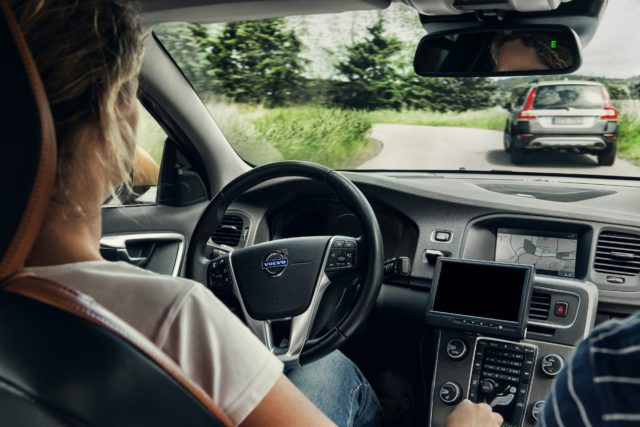
Cruise control has several advantages, chief among which is fatigue reduction. Allowing drivers to take their minds off keeping a constant speed allows them to focus more on steering and interacting with other traffic, as well as allowing them to stretch their legs and reduce muscle aches.
Advanced adaptive cruise control can prevent accidents thanks to its sensor array knowing where other vehicles are, and systems capable of reading speed limits can prevent drivers violating them and risking a ticket. It can also improve fuel efficiency.
However, it can be dangerous. Sophisticated systems, especially those paired with lane-keeping assistance tech, can encourage drivers to pay less attention when driving, increasing the risk of a collision.
Older systems were also very dangerous in the rain, on icy roads or on loose surfaces. That’s because the loss of traction in a wheel could lead the car to speed up rather than slow down, resulting in a total loss of control.

Ranked: Best secondary schools in Shropshire based on GCSE results last year Plus Education | 2 hours ago
Demolition of Shrewsbury shopping centre begins in 'significant moment' for town centre Plus Shrewsbury | 15 hours ago
Banned: Healthcare assistant who had 'couple of cocktails' before crashing on M54 Plus Crime | 2 hours ago
Plans to turn rural inn into residential home after five failed attempts to keep pub open Plus Much Wenlock | 2 hours ago
Drink driver over double the limit crashed picking up family meal at McDonald's drive-thru Plus Crime | 2 hours ago

- February 2024
- January 2024
- December 2023
- November 2023
- October 2023
- September 2023
- August 2023
- Advisories & Tips
- Apps & Software
- Buyer's Guide
- Maintenance

Cruise Control: How it Works, Types and Everything You Should Know
Learn how to effectively use cruise control in your vehicle. follow our simple instructions to optimize your driving experience.
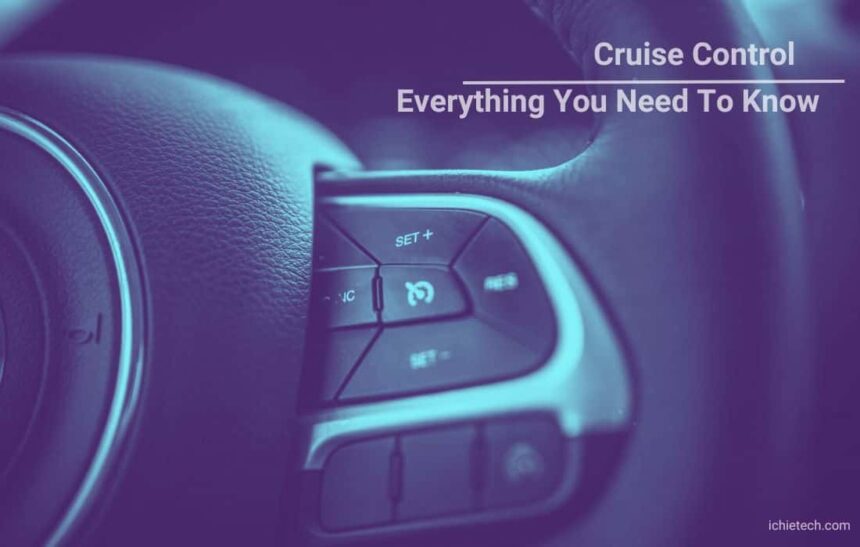
Cruise control is a popular feature in modern vehicles that can make driving more comfortable and less stressful. There are several types of cruise control systems that drivers can choose from, depending on their driving conditions and preferences. Standard cruise control is the most basic system, which allows the driver to set a constant speed that the vehicle will maintain. Adaptive cruise control, on the other hand, uses sensors to detect the distance and speed of vehicles in front of the car, adjusting the vehicle’s speed accordingly to maintain a safe following distance.
Intelligent cruise control goes even further, using artificial intelligence to learn the driver’s behaviour and adjust the speed of the vehicle before the driver takes action. Stop-and-go cruise control is ideal for use in heavy traffic and can bring the vehicle to a complete stop if necessary, while speed limiters are designed to limit the maximum speed of the vehicle. Each type of cruise control system has its own advantages and disadvantages, and drivers should choose the one that best suits their needs.
What Is Cruise Control
Cruise control is a system within a vehicle that enables drivers to establish and sustain a specific speed without having to continuously press the accelerator pedal. The system uses electronic sensors to track the vehicle’s speed and automatically regulate the throttle and brakes to maintain the predetermined speed. Cruise controle is generally employed during extended trips on highways, where sustaining a constant speed can decrease driver tiredness and boost fuel economy. It is a common feature in modern automobiles, trucks, and other types of vehicles.
How it Works
Cruise control works by using a combination of electronic sensors, servos, and control algorithms to maintain a vehicle’s speed without requiring the driver to continuously press the accelerator pedal. Here is a step-by-step breakdown of how cruise controle works:
- The driver activates cruise control by pressing a button or flipping a switch on the dashboard or steering wheel.
- The system uses electronic sensors to measure the vehicle’s speed and other factors such as throttle position, engine load, and road grade.
- The driver sets the desired speed by pressing a button or using a lever. The speed is usually displayed on the dashboard.
- Once the speed is set, the cruise controle system takes over and maintains the speed by sending signals to the throttle and brakes as necessary.
- If the vehicle encounters an incline or decline, the cruise control system adjusts the throttle to maintain a constant speed.
- If the driver needs to slow down or stop, they can deactivate the cruise control by pressing the brake or clutch pedal, or by turning off the system using the control button.
In some modern cars, the cruise control system is enhanced with additional sensors and algorithms that enable it to adapt to the surrounding traffic and road conditions. These advanced systems are known as adaptive cruise control, intelligent cruise control, or active cruise control.
How To Use Cruise Control
Cruise control is a feature commonly found in modern vehicles that allows the driver to maintain a constant speed without having to keep their foot on the accelerator pedal. Here’s how to use cruise control:
- Locate the cruise control button : The button is typically located on the steering wheel or dashboard. Check your owner’s manual if you’re having trouble finding it.
- Activate cruise control : Once you’ve found the cruise control button, press it to turn on the system. You should see a light on the dashboard indicating that cruise control is active.
- Accelerate to your desired speed : Using the accelerator pedal, accelerate to the speed you want to maintain.
- Set the speed : Press the “set” or “res” button on the steering wheel to set the speed. The vehicle will maintain this speed until you cancel cruise control or apply the brakes.
- Adjust the speed : To increase or decrease your speed, use the “+” or “-” buttons on the steering wheel.
- Cancel cruise control : To turn off cruise control, press the “off” or “cancel” button on the steering wheel, or press the brake pedal.
- Resume cruise control : If you cancel cruise control but want to resume it at the previous speed, press the “resume” button on the steering wheel.
Note: Always remember to pay attention to the road and adjust your speed as needed. Do not rely solely on cruise control while driving.
Advantages Of Cruise Control
- Reduces driver fatigue : With cruise control engaged, the driver does not have to maintain constant pressure on the accelerator pedal. This can help reduce driver fatigue, particularly during long trips.
- Conserves fuel : Cruise control helps maintain a consistent speed, which can result in better fuel efficiency. This is because the vehicle is not accelerating and decelerating as frequently, which can waste fuel.
- Helps avoid speeding tickets : Cruise control can help drivers avoid speeding tickets, as they can set the desired speed and avoid accidentally exceeding the speed limit.
- Improves safety : Maintaining a consistent speed with cruise control can help reduce the likelihood of sudden braking or acceleration, which can improve safety on the road.
- Enhances driving experience : Cruise control can make driving more comfortable and less stressful, particularly in heavy traffic or on long trips.
Disadvantages Of Cruise Control
- Limited use : Cruise controle is best suited for use on highways or other roads with minimal traffic and few curves. It may not be appropriate for use in heavy traffic or on winding roads, as it may not respond quickly enough to changing driving conditions.
- Increases risk in hazardous conditions : Using cruise controle in hazardous conditions such as rain, ice, or snow can be dangerous. The driver may not be able to react quickly enough to changing conditions, and the vehicle may lose traction or spin out of control.
- Can lead to complacency : Relying too heavily on cruise controle can lead to complacency and inattention while driving. The driver may become less aware of their surroundings or less attentive to the road.
- May cause speed variations : Cruise controle may cause speed variations due to changes in road elevation, wind, or traffic conditions. This can be a problem if the driver is not paying attention and fails to adjust the speed manually.
- May reduce driver engagement : Using cruise controle for extended periods of time may reduce driver engagement and enjoyment of the driving experience.
Types Of Cruise Control
Modern vehicles offer various types of cruise control systems to assist drivers in maintaining a steady speed. Here are some of the most common types of speed control.
1. Standard Cruise Control
Standard cruise control is the most basic form of speed control system that has been around for several decades. It allows the driver to set a desired speed and maintain it without having to keep their foot on the accelerator pedal. Once activated, the system uses electronic sensors to monitor the speed of the vehicle and automatically adjusts the throttle to maintain a constant speed.
With standard cruise controle, the vehicle will maintain the set speed regardless of changes in the road conditions, such as uphill or downhill slopes or curves. To deactivate the system, the driver can either apply the brakes or turn off the cruise control switch. Standard cruise controle can be found on many vehicles, from entry-level models to high-end luxury cars.
While it can help reduce driver fatigue and improve fuel economy on long drives, it requires the driver to remain attentive and adjust the speed manually if necessary. Therefore, it is important for drivers to use it responsibly and not rely solely on the system to maintain a safe driving experience.
Advantages of Standard Cruise Control
- Reduced driver fatigue : By allowing the driver to set a constant speed and not having to keep their foot on the accelerator pedal, standard cruise control can help reduce driver fatigue and make long drives more comfortable.
- Improved fuel efficiency : Maintaining a constant speed using cruise controle can improve fuel efficiency by reducing unnecessary acceleration and deceleration, resulting in lower fuel consumption.
- Avoiding speeding tickets : Standard cruise control helps drivers avoid unintentionally exceeding the speed limit, which can result in costly speeding tickets.
- Easier driving in heavy traffic : When driving in heavy traffic, using cruise controle can help reduce stress and allow drivers to focus on other aspects of driving, such as changing lanes and looking out for other drivers.
- Consistent speed : By maintaining a consistent speed, standard cruise controle can provide a smoother driving experience, especially on long, open roads where it can be challenging to maintain a constant speed manually.
Disadvantages Of Standard Cruise Control
- Limited functionality : Standard cruise control can only maintain a constant speed and does not adjust the speed based on traffic or road conditions. As a result, drivers must be attentive and make manual adjustments if necessary, especially in situations such as steep hills, winding roads, or heavy traffic.
- Reduced control : By taking over the throttle, standard cruise controle can reduce the driver’s control over the vehicle, particularly in emergency situations that require quick acceleration or deceleration.
- Safety risks : Standard cruise controle may pose a safety risk in some situations, such as when driving on wet or icy roads, where sudden changes in road conditions could cause the vehicle to skid or lose control.
- Increased fuel consumption : In some cases, standard cruise controle can actually increase fuel consumption, particularly in stop-and-go traffic, where frequent acceleration and deceleration can lead to higher fuel consumption than maintaining a constant speed.
- Maintenance and repair costs : If the cruise controle system malfunctions, it can be costly to repair or replace.
2. Adaptive Cruise Control
Adaptive Cruise Control (ACC) is an advanced form of speed control that uses sensors and radar to detect the distance between the driver’s car and the vehicle ahead, unlike other types of cruise control systems. This type of cruise control automatically adjusts the speed of the vehicle to maintain a safe following distance and can even bring the vehicle to a complete stop if necessary.
The system uses sensors and radar to detect the distance between the driver’s car and the vehicle ahead. If the vehicle ahead slows down or stops, the ACC system automatically applies the brakes to slow down or stop the car, maintaining a safe distance. When the road clears or the vehicle ahead moves faster, the ACC system accelerates the car to the driver’s set speed or the maximum speed limit.
Some ACC systems also come with collision warning systems that alert the driver if the car gets too close to the vehicle ahead. Some systems can also detect pedestrians, animals, or other obstacles and apply the brakes if necessary.
Advantages Of Adaptive Cruise Control
- Enhanced safety : By automatically maintaining a safe distance from the vehicle ahead, adaptive cruise control can help reduce the risk of rear-end collisions, making it a valuable safety feature.
- Reduced driver fatigue : Adaptive speed control can reduce driver fatigue by taking over the task of maintaining a safe following distance, especially in heavy traffic.
- Increased convenience : ACC can make long drives more comfortable and less stressful, as the driver doesn’t have to constantly adjust the speed.
- Fuel efficiency : By maintaining a constant speed and reducing unnecessary acceleration and deceleration, adaptive cruise control can help improve fuel efficiency.
Disadvantages Of Adaptive Cruise Control
- High cost : ACC systems are more expensive than traditional cruise control systems.
- Limited functionality : ACC may not work in all driving situations, such as on winding roads or in heavy rain or snow.
- Over-reliance : Drivers may become too reliant on the ACC system and neglect to pay attention to the road and other vehicles, which can lead to accidents.
- Complex operation : ACC systems can be complex and difficult to operate, requiring drivers to understand how the system works and how to use it correctly.
3. Intelligent Cruise Control
Intelligent Cruise Control (ICC), also known as Active Cruise Control (ACC), is an advanced form of cruise controle that uses sensors and cameras to detect the distance and speed of the vehicles ahead. ICC not only maintains a safe distance from the vehicle ahead but also adjusts the speed of the vehicle to match the flow of traffic.
The system uses a forward-facing camera and sensors to detect the speed and distance of the vehicle in front of the driver. If the vehicle ahead slows down or speeds up, ICC automatically adjusts the speed of the driver’s car to maintain a safe following distance. Unlike regular speed control, ICC can also bring the car to a complete stop and resume driving when the vehicle ahead starts moving again.
ICC systems can also recognize lane markings and keep the car centred within the lane, providing additional safety and convenience benefits. Some ICC systems can even detect and respond to pedestrians and other obstacles, providing an added layer of safety.
Advantages Of Intelligent Cruise Control
- Increased safety : By automatically adjusting the speed and maintaining a safe following distance, ICC can help prevent accidents and reduce the risk of collisions.
- Reduced driver fatigue : ICC can reduce driver fatigue and make long drives more comfortable, especially in heavy traffic.
- Improved fuel efficiency : By maintaining a constant speed and reducing unnecessary acceleration and deceleration, ICC can help improve fuel efficiency.
- Enhanced convenience : ICC can make driving more convenient and less stressful, as the system takes care of maintaining a safe distance and speed.
Disadvantages Of Intelligent Cruise Control
- High cost : ICC systems can be expensive, especially in luxury cars.
- Complex operation : ICC systems can be complex and difficult to operate, requiring drivers to understand how the system works and how to use it correctly.
- Limited functionality : ICC may not work in all driving situations, such as on winding roads or in heavy rain or snow.
- Over-reliance : Drivers may become too reliant on the ICC system and neglect to pay attention to the road and other vehicles, which can lead to accidents.
4. Stop-and-Go Cruise Control
Stop-and-Go Cruise Control is an advanced form of speed control, Unlike other types of cruise controle systems. It can maintain a safe distance from the vehicle ahead, even in stop-and-go traffic. This type of cruise controle is designed to help drivers reduce stress and fatigue when driving in heavy traffic conditions. The system uses sensors and cameras to detect the distance and speed of the vehicle ahead.
When traffic slows down or comes to a stop, the Stop-and-Go Cruise Control system automatically applies the brakes to bring the car to a complete stop. When the traffic ahead starts moving again, the system automatically accelerates the car to follow the flow of traffic.
Stop-and-Go speed control systems can help reduce the stress and fatigue of driving in heavy traffic, as the system takes care of maintaining a safe distance and speed. Some systems also have the ability to recognize and respond to pedestrians and other obstacles, providing an added layer of safety.
Advantages Of Stop-and-Go Cruise Control
- Reduced driver fatigue : Stop-and-Go Cruise controle can reduce driver fatigue and make long drives in heavy traffic more comfortable.
- Increased safety : By automatically adjusting the speed and maintaining a safe following distance, Stop-and-Go Cruise controle can help prevent accidents and reduce the risk of collisions.
- Enhanced convenience : Stop-and-Go speed control can make driving in heavy traffic more convenient and less stressful, as the system takes care of maintaining a safe distance and speed.
- Improved fuel efficiency : By maintaining a constant speed and reducing unnecessary acceleration and deceleration, Stop-and-Go Cruise controle can help improve fuel efficiency.
Disadvantages Of Stop-and-Go Cruise Control
- Limited functionality : Stop-and-Go speed control may not work in all driving situations, such as on winding roads or in heavy rain or snow.
- High cost : Stop-and-Go speed control systems can be expensive, especially in luxury cars.
- Complex operation : Stop-and-Go speed control systems can be complex and difficult to operate, requiring drivers to understand how the system works and how to use it correctly.
- Over-reliance : Drivers may become too reliant on the system and neglect to pay attention to the road and other vehicles, which can lead to accidents.
5. Speed Limiter
A speed limiter is a type of speed control system that is designed to limit the maximum speed of a vehicle. Unlike other types of cruise control systems, which maintain a set speed, a speed limiter prevents a vehicle from exceeding a certain speed limit.
Speed limiters can be installed in vehicles as a safety feature, particularly in commercial vehicles like trucks and buses. These vehicles are often required by law to have speed limiters installed, as they can help prevent accidents caused by excessive speed. In addition, speed limiters can help improve fuel efficiency and reduce wear and tear on the vehicle’s engine and brakes.
There are two main types of speed limiters :
Hard limiters : These limiters prevent a vehicle from exceeding a certain speed limit, typically set by the manufacturer. Once the limit is set, it cannot be exceeded, even in emergency situations. Soft limiters : These limiters allow the vehicle to exceed the set speed limit in certain situations, such as when overtaking or accelerating to merge onto a highway. However, the limiter will still prevent the vehicle from exceeding the maximum speed limit.
Advantages Of Speed Limiter
- Increased safety : Speed limiters can help prevent accidents caused by excessive speed, especially in commercial vehicles.
- Reduced fuel consumption : By limiting the maximum speed of a vehicle, speed limiters can help improve fuel efficiency.
- Reduced wear and tear : Speed limiters can help reduce wear and tear on a vehicle’s engine and brakes, extending the life of the vehicle.
- Compliance with regulations : In some countries, commercial vehicles are required by law to have speed limiters installed.
Disadvantages Of Speed Limiter
- Limited functionality : Speed limiters may not be effective in preventing all types of accidents or speeding violations.
- Reduced driver control : Some drivers may feel uncomfortable with a speed limiter installed, as it restricts their ability to control the vehicle’s speed.
- Maintenance costs : Speed limiters may require maintenance and calibration, which can be costly.
It’s important to remember that cruise control is not a substitute for attentive driving. Drivers should always remain aware of their surroundings and be ready to take control of the vehicle at any time. Additionally, drivers should not use speed control in certain situations, such as in heavy traffic, on wet or slippery roads, or when driving in mountainous terrain. Overall, it can be a helpful tool for long-distance driving on open roads, but drivers should always use it with caution and be aware of its limitations.
You Might Also Like
Top chinese suvs and crossovers to consider in 2024, car maintenance tips to keep your car in tip-top shape, 2023 toyota camry: features, specs and price in nigeria, 10 cheap cars with hidden fuel efficiency you should know, 2022 toyota camry: features, specs and price in nigeria, sign up for daily newsletter, be keep up get the latest tech and auto news delivered straight to your inbox..
Email address:
Leave a Reply Cancel reply
Your email address will not be published. Required fields are marked *
Save my name, email, and website in this browser for the next time I comment.
Stay Connected
Latest news.

How to Cancel Data Auto-Renewal on MTN, Airtel, Glo and 9mobile

Best Laptops for Students: The Top 10 Laptops for Students in 2024

Xiaomi Redmi A3 Review: Specs and Price in Nigeria

How to Check Car Registration Status in Nigeria
Recent comments.
Sign in to your account
Username or Email Address
Remember Me
Cruise Control Explained: How It Works, And When You Should Use It
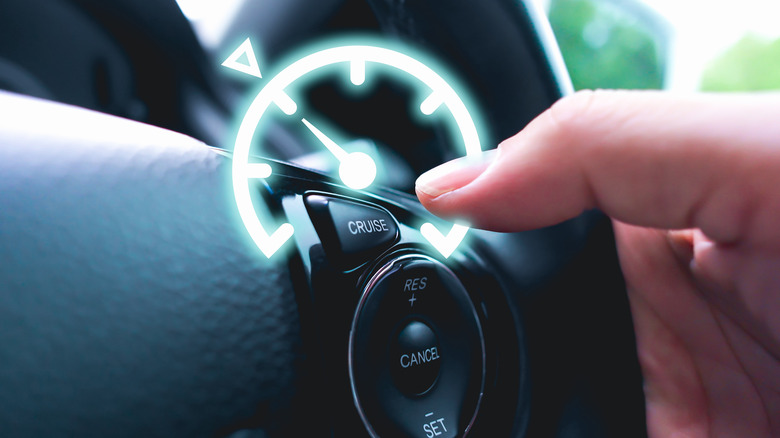
Self-driving cars are becoming increasingly intelligent , but whether they'll ever be ubiquitous and fully capable remains unclear. Tesla notes (for now) that its Full Self Driving Capability is "intended for use with a fully attentive driver, who has their hands on the wheel and is prepared to take over at any moment." For many drivers at present, the automatic functions of their cars are limited to the likes of beeping sensors, flashing displays, and features like cruise control.
Cruise control is a feature provided as standard on a wide range of vehicles; it's one of those functions that some drivers adore and others barely use. While the feature doesn't take over from the driver by any means, it can significantly ease their burden. Essentially, cruise control allows drivers to select an appropriate speed for the road, conditions, and general journey they're currently on, and automatically prevents the vehicle from deviating from that speed.
Experienced drivers, of course, will probably be familiar with the basics of what cruise control does, even if they haven't really used it themselves. Rather more complex than that, though, is the question of exactly how it keeps the vehicle moving at a specific speed. If you've ever wondered how cruise control works, what the pros and cons of using it are, how it's developed since its introduction, and/or when to use it, this is just the piece for you.
The essentials of how cruise control works
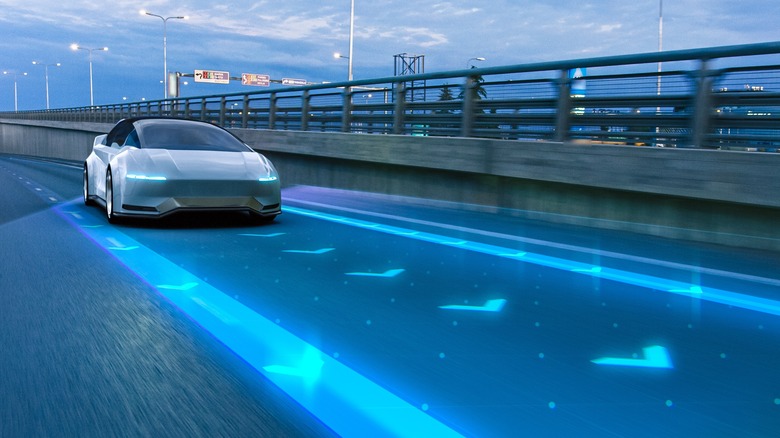
Cruise control as we know it today has its roots in the ingenuity of Ralph Teetor. Though he lost his vision following an accident, Teetor rose to become the president of the Society of Automotive Engineers. In that capacity, he used both his passion for auto safety and his extensive experience with other drivers to create the first example of cruise control. In 1950, Teetor held a patent for technology referred to as a "Speed Control Device For Resisting Operation Of The Accelerator," also called the Speedostat, and it worked just as the name implied: the driver could opt for a certain speed by selecting it from the dash, then, through the drive shaft, a piston would provide resisting force on the pedal after arriving at that speed.
The basics of how cruise control functions haven't actually changed very much. Depending on the vehicle model, the input for choosing the desired speed may now be a touchscreen, but the effect is the same: a connected actuator receives the signal from the control device, and, as it runs to the valve for the throttle, is used to control the strength of the force acting on the throttle. Accelerating faster or slower depending on how much faster the inputted speed is, the vehicle will then reach said speed and hold the accelerator in place (though not necessarily physically as Teetor's Speedostat did). This is a mechanically-oriented form of cruise control, but some modern vehicles utilize adaptive cruise control instead.
How is adaptive cruise control different?
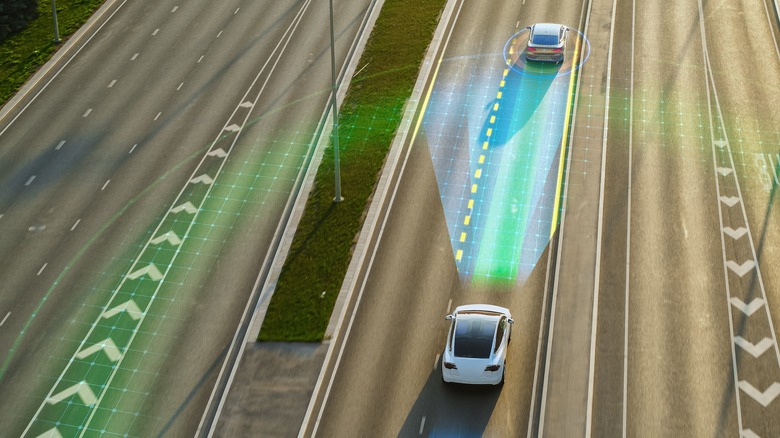
The basic concept of cruise control, of course, is centered more around what the specific vehicle is doing, rather than what's on the road around it. Drivers can simply brake as they typically would in response to other drivers, overriding the constant-speed effect of cruise control, which means that autonomy isn't really a factor in cruise control beyond maintaining the speed. Adaptive cruise control like the kind found in some Acura vehicles , however, is a little more sophisticated.
Adaptive cruise control is a feature more able to do exactly that: adapt. This means that while the driver selects the vehicle's cruising speed as before, it is not locked to that speed. Another crucial thing to take into account is the vehicle's distance from others; adaptive or autonomous cruise control adds small and discreet radar systems (inputs situated somewhere near the vehicle's front lights) to the equation to monitor the surrounding area. These radars have ranges from approximately 100 feet to around 600 feet, depending on the vehicle.
A car with ACC will commonly boast small wheel-mounted units that measure its speed, along with a front-mounted one that can determine how far away other vehicles are. The former can adjust how fast your vehicle is moving relative to any motorists ahead, thereby ensuring that you always maintain your selected distance from them. Braking capacity while the system is active differs, but typically, the driver will be alerted to brake heavily if necessary (if a driver ahead does the same for instance).
When cruise control should be used
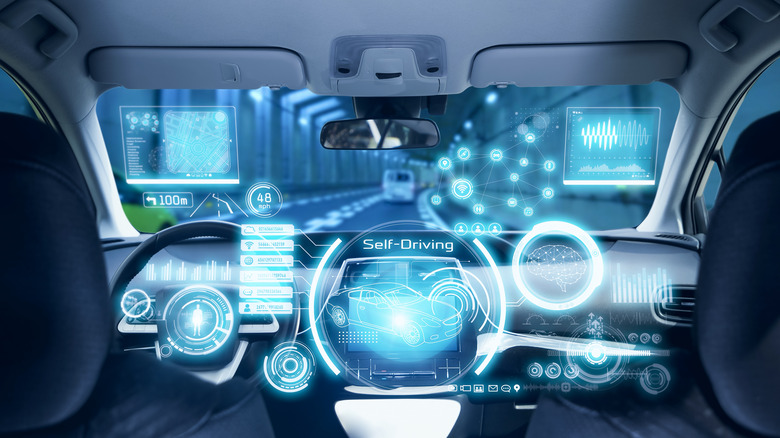
Some drivers often have the luxury of wide, peaceful, near-empty roads. For others, driving tends to be a commuter's cacophony of traffic jams, honking horns, and slow stop-start-stop-start progress. The experience can differ greatly depending on the time of day and whether it's a weekday or the weekend. The bottom line, though, is that one of these scenarios is a far better fit for cruise control than the other.
Brakes remain operational during the use of cruise control, and engaging them will override the system. This means two things: the driver's attention must still firmly remain on the road as ever (we're not at level 5 on the autonomous driving scale here) and cruise control has sharply decreased utility in congested areas. By contrast, if you're a driver who frequently takes long-distance trips on open roads, cruise control could be the perfect feature for you. An alert and rested driver is a safe driver, and where longer journeys can compromise those things, cruise control reduces some of that pressure.
Adaptive cruise control, which monitors the ever-changing road ahead continuously via radar or laser, is potentially better equipped to handle congested roads. There's no definitive answer on whether that's the case, however, because this feature is very different from vehicle to vehicle.
Different manufacturers have different cruise control features
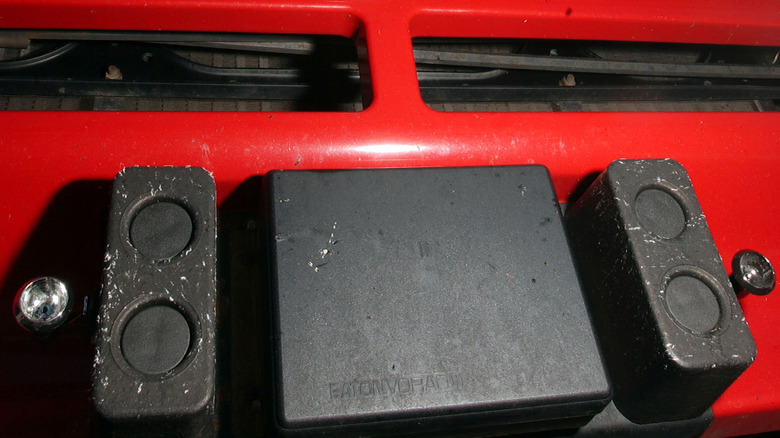
Cruise control is a common feature, and adaptive cruise control is becoming increasingly widespread too. The matter of how the two types of cruise control work is a very complex one beyond the basics, though, because different vehicle manufacturers have developed their own unique features for it and implemented the system in different ways.
For example, Audi's Traffic Jam Assist technology can be activated in tandem with its adaptive cruise control, thereby supporting the driver in conditions that aren't optimal for the latter. By means of ultrasonic sensors, radar, and a windshield camera, the vehicle will maintain a consistent distance from the one ahead in traffic while staying oriented on the road. The driver takes full manual controlwhen the congestion clears or Traffic Jam Assist otherwise becomes unsuitable for the situation.
Similarly, select Ford models are among those that offer Intelligent Adaptive Cruise Control, implementing advanced features such as Speed Sign Recognition (which aims to prevent adaptive cruise control users from being caught out by speed limits by adjusting the chosen speed to match them) and Stop-and-Go (limited capacity to stop entirely in response to a vehicle ahead doing the same). As always, drivers should consult their vehicle manual to determine which cruise control features are available and how to use them.
Pros and cons of cruise control and adaptive cruise control
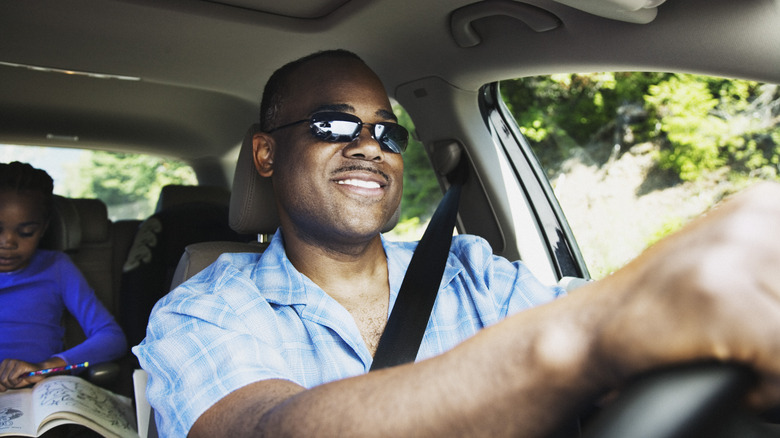
Cruise control can be advantageous for drivers in other ways too. In its capacity to ensure a vehicle remains at a steady speed, where possible, it can boost driving efficiency. According to Natural Resources Canada , varying your speed by around 6 mph every 18 seconds can be 20% more costly in terms of fuel. Cruise control, in a general sense, aims to be as efficient as possible within the parameters the driver provides, which can potentially translate to less fuel being used over time.
This is only the case when driving for longer stretches on wide, clear roads, however. The reason is that there are certain things human drivers are better at than their machine counterparts, and adjusting speed subtly in response to changes in elevation is one of them. Failing to do so can be wasteful.
On a similar note, Vanderbilt University found that drivers are more adaptable in their thinking and processing of multiple vehicles and their movements on the road, while cruise control features tend to have a rather narrower focus in terms of the vehicle(s) in front. Cruise control can serve as an invaluable tool for drivers, but isn't infallible. Ensuring that you use it for its intended purpose is the key to best taking advantage of it.
Recommended
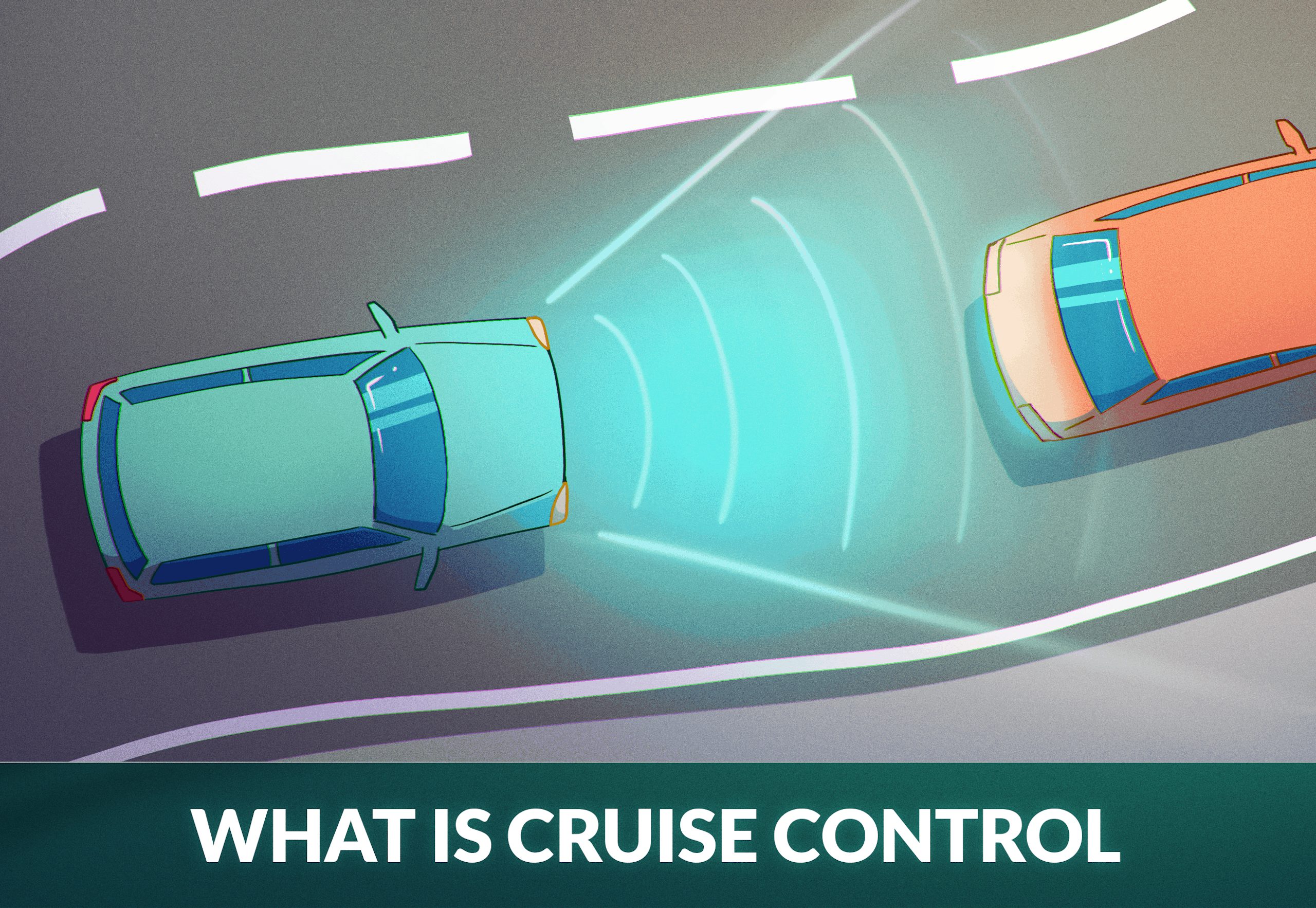
Cruise Control Explained – All You Need to Know
Cruise control has come a long way since first invented and patented by Ralph Teetor in 1950, who originally named it the “Speedostat”. Chrysler Corporation was the first manufacturer to offer the groundbreaking mechanism as an option on several of its luxury vehicle models nine years later. Today, cruise control is rapidly becoming the standard on all new vehicles, providing drivers with increased convenience on their daily drive.
As you’re learning how to operate a vehicle , understanding cruise control will help increase your comfort behind the wheel and knowledge of driving.
What is Cruise Control?
Cruise control is an electronic device within your vehicle that controls the speed of your vehicle. It allows the driver to maintain a constant speed of 25 mph without holding their foot on the accelerator. Although the feature has been around for 70 years, automotive manufacturers continue to improve upon the technology to provide drivers with increased comfort, luxury, and convenience whenever they’re behind the wheel.
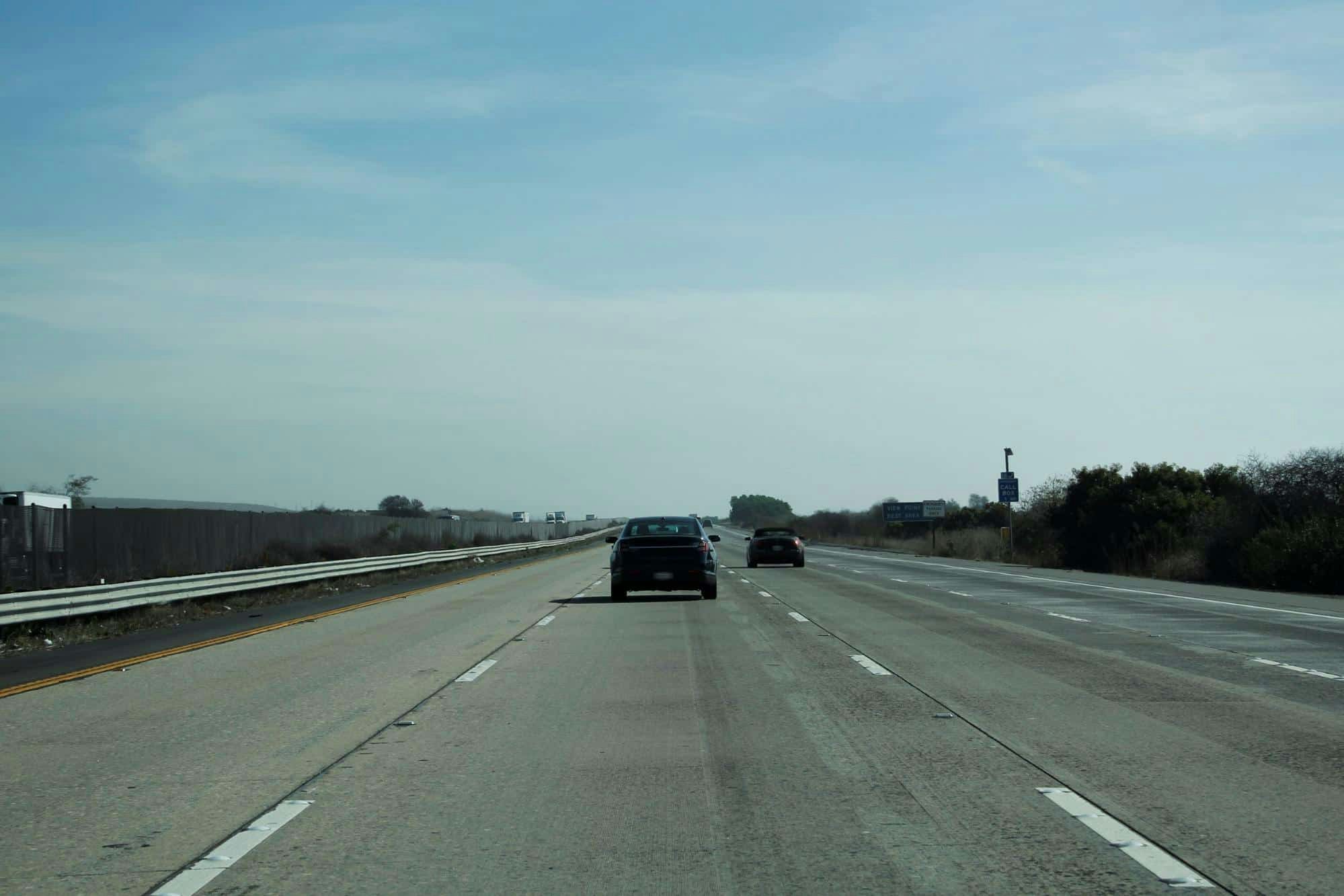
Different Types of Cruise Control
There are 3 types of cruise control systems.
- Speed Limiter
- Adaptive Cruise Control
- Semi-autonomous Cruise Control
What is a Speed Limiter?
A speed limiter will limit how fast the driver can accelerate behind the wheel. All modern vehicles contain a standard speed limiter capping speed between 120 mph and 180 mph depending to protect the vehicle’s engine and discourage reckless driving. However, an additional limiter can be added as an option in many European-made cars, as well as Tesla, Ford, and Nissan. Drivers are still required to keep their foot on the pedal to keep their vehicle in motion, but will not be able to accelerate past a predefined speed limit.
What is Adaptive Cruise Control?
Adaptive cruise c ontrol uses sensors around the vehicle’s exterior to maintain speed while keeping a safe following distance from the car ahead. The system will slow you down and speed you up as the flow of traffic fluctuates throughout your commute, removing a lot of the stress from daily driving. However, adaptive cruise control may not work well in bad weather or protect you from sudden movements, so you will want to always keep your full attention on the road.
What is Semi-autonomous Cruise Control?
Luxury automakers such as Tesla and Audi are implementing the newest rendition of cruise control on their latest vehicle models – Semi-autonomous Cruise Control. It works largely the same as adaptive cruise control, but assists drivers with lane guidance and steering. There are several variations of semi-autonomous cruise control that include additional convenience features for the driver.
How to Use Cruise Control – 6 Step Guide
These are the steps to using cruise control effectively.
- Observe weather conditions
- Build speed
- Engage cruise control
- Set cruise control
- Watch the road and steer
- Brake to disengage
1 – Observe weather conditions
As mentioned, cruise control may become inconsistent in rainy, snowy, or otherwise hazardous conditions. If you must drive in this situation, it may be a better idea to do so manually. Cruise control works best on a clear day with constant traffic flow.

2 – Build speed
Accelerate to your desired speed as you prepare to activate cruise control. US highways have posted speed limits between 55 mph and 75 mph. Do not attempt to set cruise control when you are traveling over the speed limit.
3 – Engage cruise control
Once you’ve reached your desired speed, engage the cruise control. This step will vary widely based on your vehicle make and model, however, many cruise control settings are accessible from the steering wheel controls. Check your owner’s manual for further information.
4 – Set cruise control
After turning on cruise control, you’ll need to set your desired speed. Many systems set the cruise control at the current speed, while others require you to manually set one. You can increase and decrease this speed as needed without interrupting the mechanism.
5 – Watch the road and steer
Watching the road is essential when cruise control is engaged. Cruise control is not a substitute for a human driver and will require supervision at every step. If you are using a semi-autonomous system, you will not need to steer but will need to keep at least one hand on the wheel for safety measures.
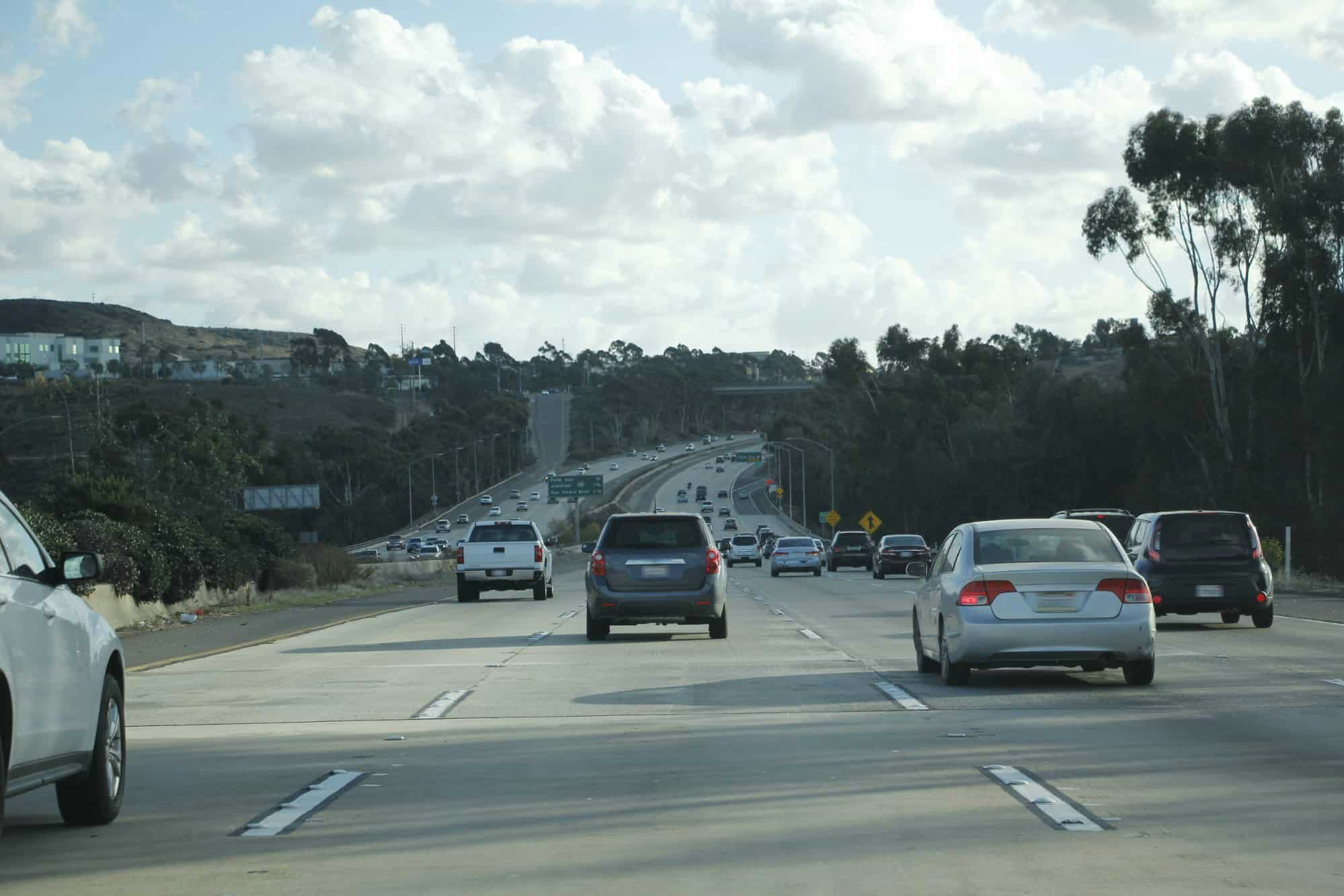
6 – Brake to disengage
When cruise control is no longer needed, or you need to quickly make a maneuver, simply apply pressure to the brakes to disengage the system. Once deactivated, you will be in full control of your vehicle once again.
When NOT to Use Cruise Control
While cruise control is a convenient feature for modern drivers, it is not perfect for all circumstances. In fact, utilizing the system can be quite dangerous if you’re not careful. Be sure not to use cruise control under these conditions.
Heavy Traffic
Heavy, or stop-and-go traffic is not ideal for safely using cruise control. When engaging cruise control on the highway, ensure your lane is clear and there are no vehicles stopping ahead.
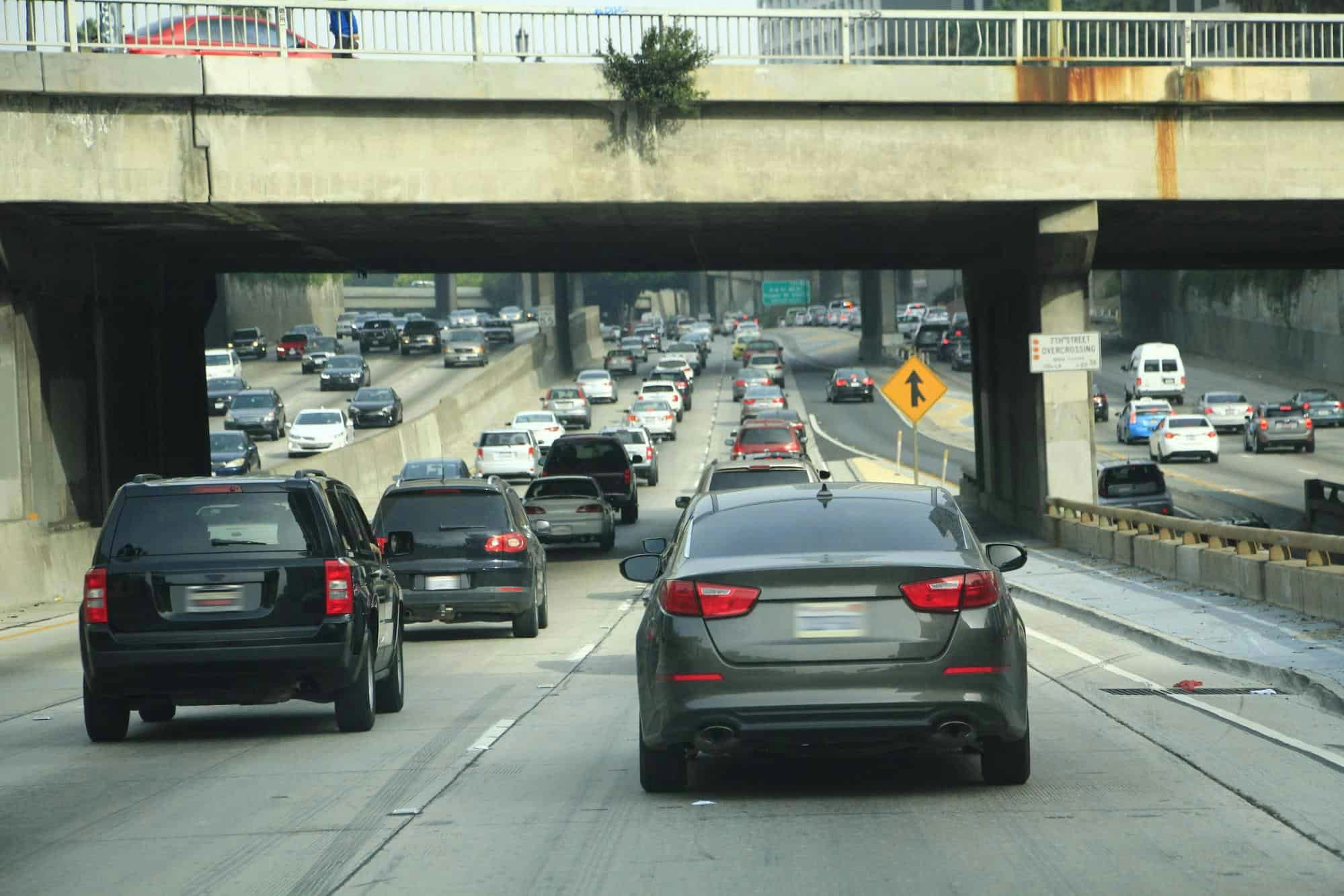
Wet or Icy Conditions
You need to be driving slowly while on wet and icy roads. While cruise control keeps a constant, predetermined speed, it takes away a lot of the manual control needed to stay safe when it’s raining or snowing.
City Driving
While driving through the city, you’ll face a number of stop lights and stop signs that will require manual braking. This action will automatically disengage cruise control.
Winding Roads
Winding roads require more attention than straight, flat streets. Cruise control systems, even adaptable cruise control, may not always detect these streets correctly, causing accidents.
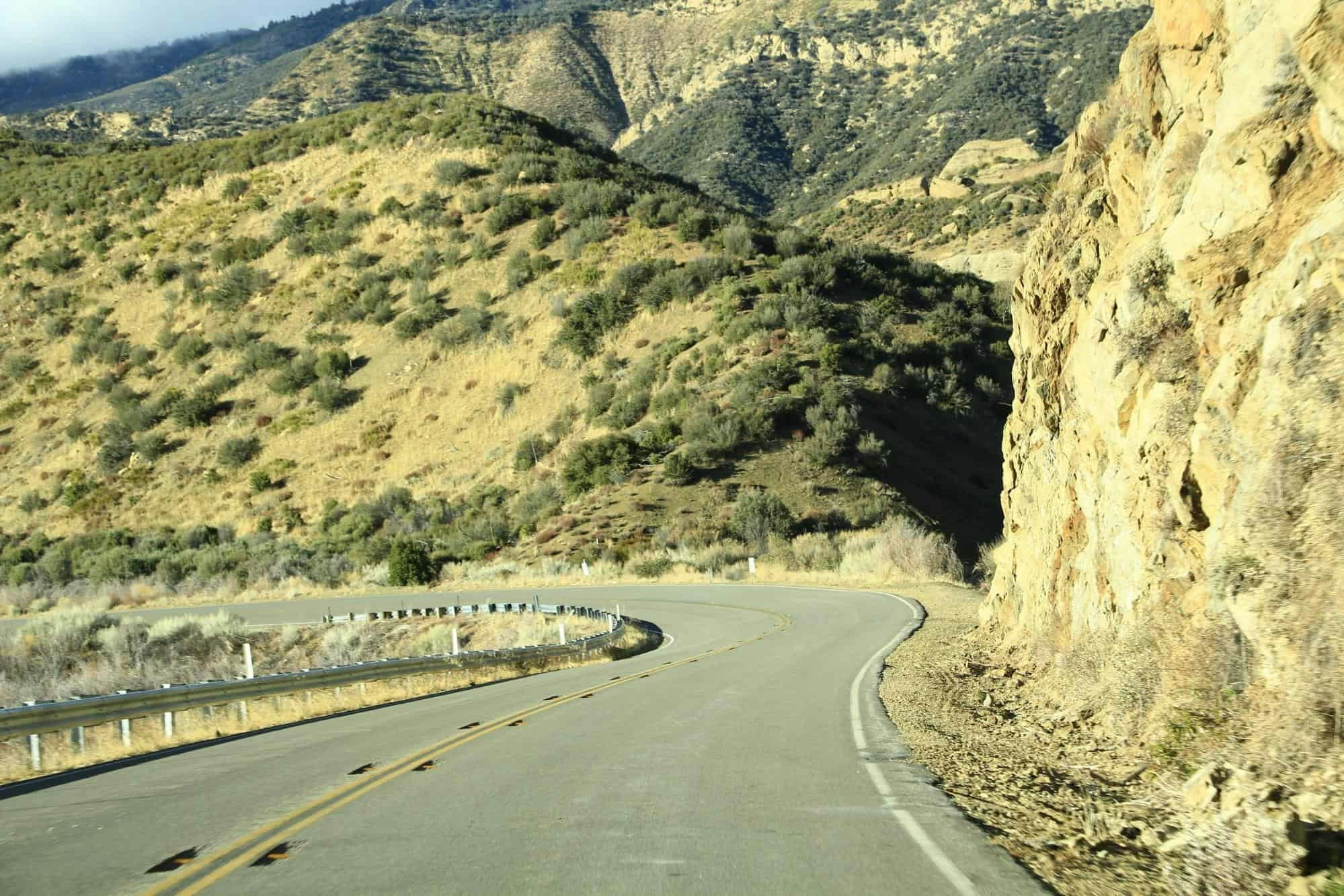
Fatigued Driving
Driving while fatigued is never a good idea, but even less so while using cruise control. Utilizing the system may add to your fatigue, as you give your vehicle more control of the journey. If you’re even the least bit tired, you should never turn on cruise control.
As you can see, cruise control is a great way to relieve much of the stress that comes with everyday driving. The constant rate of speed can also drastically improve fuel efficiency for longer drivers. Cruise control has had a positive impact on the driving industry for 70 years and shows no signs of disappearing anytime soon.

550+ exam-like questions
All you need to ace your test
Perfect for first-timers, renewals and senior citizens
Recommended articles

Zutobi 2024 Holiday Report: The Deadliest Holidays to be Driving
Holidays are meant to be moments of joy and celebration, but amidst the festivities, there are hidden dangers that we often overlook. every year, as countless americans hit the road to enjoy their well-deserved breaks, they unwittingly encounter risks that can turn these happy occasions into tragic events. between 2018 and 2022, an alarming 11,058 […].
Driving School Costs Report – The Cheapest and Most Expensive States
For many, the ability to drive is not just about mobility—it’s a rite of passage that symbolizes freedom and the thrill of charting one’s own course. the anticipation of sitting behind the wheel for the first time is a universal dream, yet for many aspiring drivers in the united states, this dream comes with variable […].
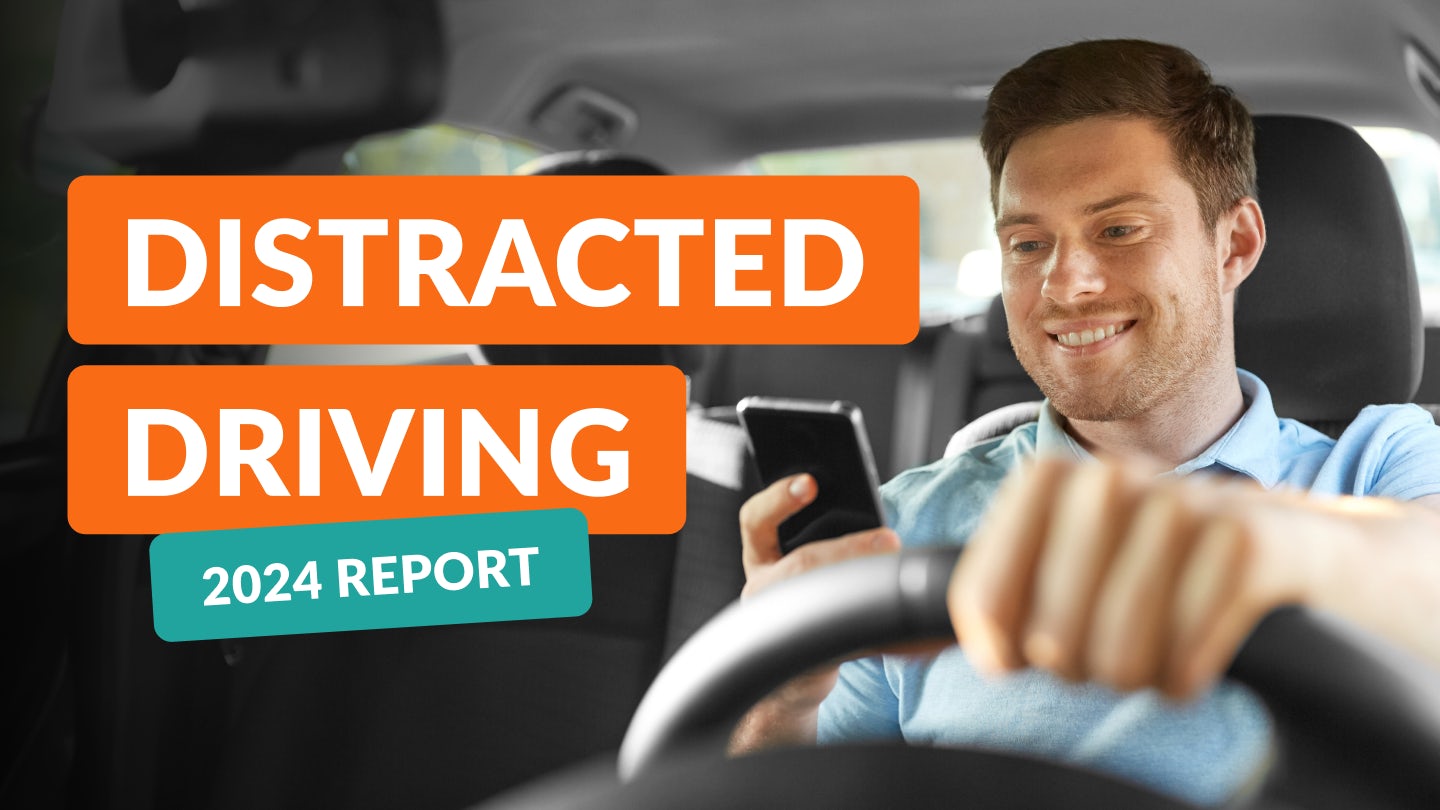
Distracted Driving Report – The States With the Least and Most Distracted Driving
In april 2024, the national highway traffic safety administration (nhtsa) released data for 2022 that illustrated traffic deaths due to distracted driving increased by 12 percent from 2020 but decreased compared to 2021 to 6%. every year, thousands of drivers and passengers are fatally injured as a result of distracted driving. in 2022, roughly 2,109 […].
Ace your DMV test, guaranteed
Get started
- Learner’s Permit Ultimate Guide
- Driving Test Ultimate Guide
- Traffic Lights Guide
- How to Pass the DMV Permit Test
- How to Pass the Driving Test
- Common Reasons For Failing the Road Test
- International Driver’s Permit Guide
- Driver’s License Renewal
- How to Get Your US Driver’s License
- How to Prepare for Your Road Test
- How to Get a Driver’s Permit
- Behind-The-Wheel training
- Terms & conditions
- Privacy policy
- Do Not Sell My Personal Information
- Subscription terms
- Terms & policies
- Car Practice Tests
- CDL Practice Tests
- Motorcycle Practice Tests

IMAGES
COMMENTS
Radar Adaptive Cruise Control. Uses radio waves in the 24 GHz or 77 GHz frequency bands. Excellent range (160m+) and unaffected by weather. Distributed beam provides wide field of view. Cannot identify shape and classification of objects. Overall the most robust and widely adopted ACC technology.
Adaptive cruise control (ACC) is a type of advanced driver-assistance system for road vehicles that automatically adjusts the vehicle speed to maintain a safe distance from vehicles ahead. As of 2019, it is also called by 20 unique names that describe that basic functionality. ... BMW introduced radar "Active Cruise Control" in Europe on the ...
Active cruise control; Dynamic cruise control; ... This type of sensor can look different depending on the design and model of the car. Laser-Based Systems. As mentioned by Electronic Design, ...
Adaptive cruise control (ACC) is like traditional cruise control, but smarter. ACC systems allow you to set a desired speed until your vehicle encounters slower-moving traffic. Then it will brake ...
On a car with adaptive cruise control (ACC), you switch on the system, then you can raise or lower your speed as desired, and the car will accelerate to that set speed. These systems use either ...
Adaptive cruise control (ACC) is an intelligent form of cruise control that allows vehicles to speed up and slow down automatically in order to keep pace with the traffic ahead. ACC is also known as autonomous cruise control, active cruise control, intelligent cruise control and radar cruise control. But regardless of what it's called, it's ...
Different names for Adaptive Cruise Control Systems "Adaptive cruise control" is a generic term. Although most brands use it, some have their own names for the same type of system.
2. 2018 Mazda 3. The 2018 Mazda 3 provides drivers with an adaptive cruise control system that detects rear-cross traffic and blind-spot monitoring, great for making safe lane changes. It also ...
Adaptive cruise control (ACC) is an intelligent form of cruise control that slows down and speeds up automatically to keep pace with the car in front of you. The driver sets the maximum speed ...
Simple to use, all you need to do is turn on the system in your vehicle, reach your desired cruising speed, and set it. The system then assumes control of the accelerator, maintaining the set ...
There are a few different types of adaptive cruise control on the market. Some systems are radar-based (these are the most commonplace), while others use cameras or a combination of radar and cameras.
Different carmakers have their own versions of these systems - Audi's 'Adaptive Cruise', BMW's 'Active Cruise Control', and Volvo's 'Pilot Assist' are just a few examples ...
Yes. Active Cruise Control was designed with high-volume commuter traffic in mind. Where speeds are constantly changing from 100km/h to a dead stop with not much warning. It only takes one driver ...
Not only are there different kinds of cruise control systems, but depending on the manufacturer, they will have unique names. Below are a few examples of similar systems but with different names:
With an adaptive cruise control system the car tries to maintain your chosen speed, but will also keep a safe distance to the car in front. If the vehicle ahead slows down or someone cuts into your lane, the car eases off the accelerator or uses the brakes to slow down and keep an appropriate distance. Often you can tell the system whether you ...
An adaptive cruise control system, also known as active cruise control, helps mitigate those risks by automatically adapting to changing traffic conditions, slowing down or speeding up with traffic as needed. Way back in 1992 (the same year Australia's one- and two-cent coins were withdrawn from circulation), Mitsubishi was putting the ...
Basic systems are usually operated by a control either on the steering wheel or a steering column stalk. Cruise control consists of an up/down (or +/-) control, as well as a 'Set' button, a ...
Here is a step-by-step breakdown of how cruise controle works: The driver activates cruise control by pressing a button or flipping a switch on the dashboard or steering wheel. The system uses electronic sensors to measure the vehicle's speed and other factors such as throttle position, engine load, and road grade.
Cruise control, in a general sense, aims to be as efficient as possible within the parameters the driver provides, which can potentially translate to less fuel being used over time. This is only ...
Whereas, adaptive cruise control with stop and go feature can be activated below 30 km/h. Types of Adaptive Cruise Control. The adaptive cruise control with stop and go feature is getting modernised with time and new technologies are being used in the system. Following are the different types of ACC currently used in commercial vehicles. Laser ...
5 - Watch the road and steer. Watching the road is essential when cruise control is engaged. Cruise control is not a substitute for a human driver and will require supervision at every step. If you are using a semi-autonomous system, you will not need to steer but will need to keep at least one hand on the wheel for safety measures.